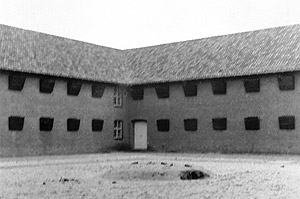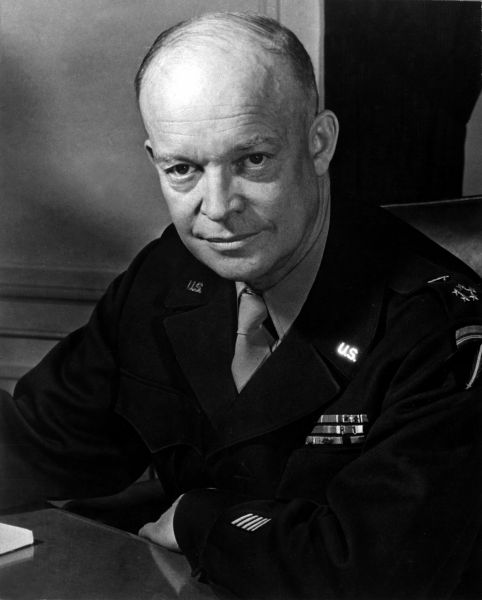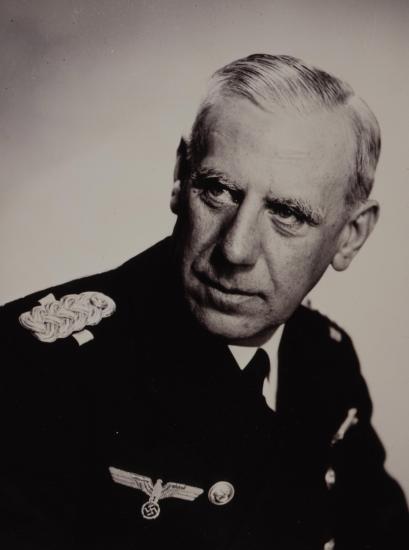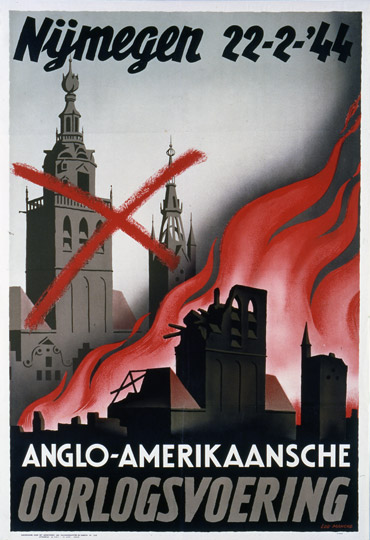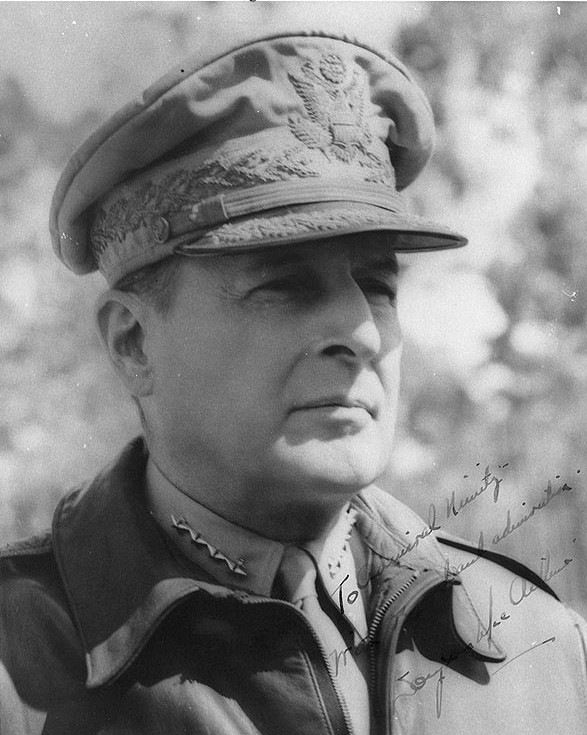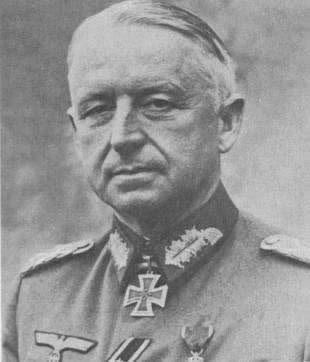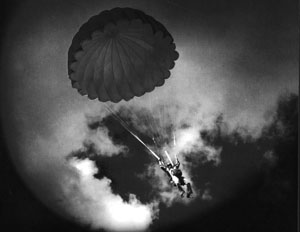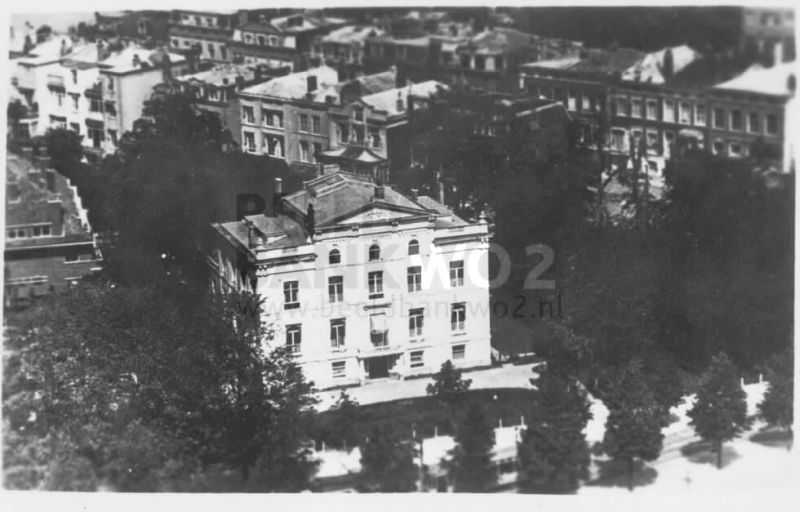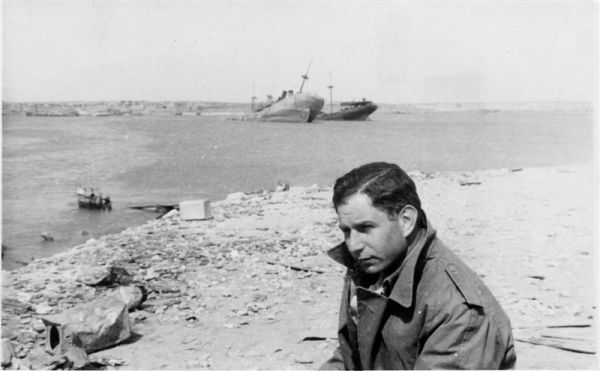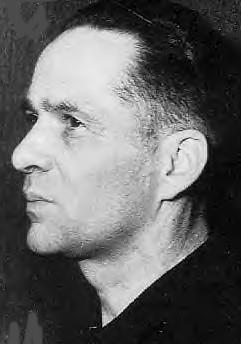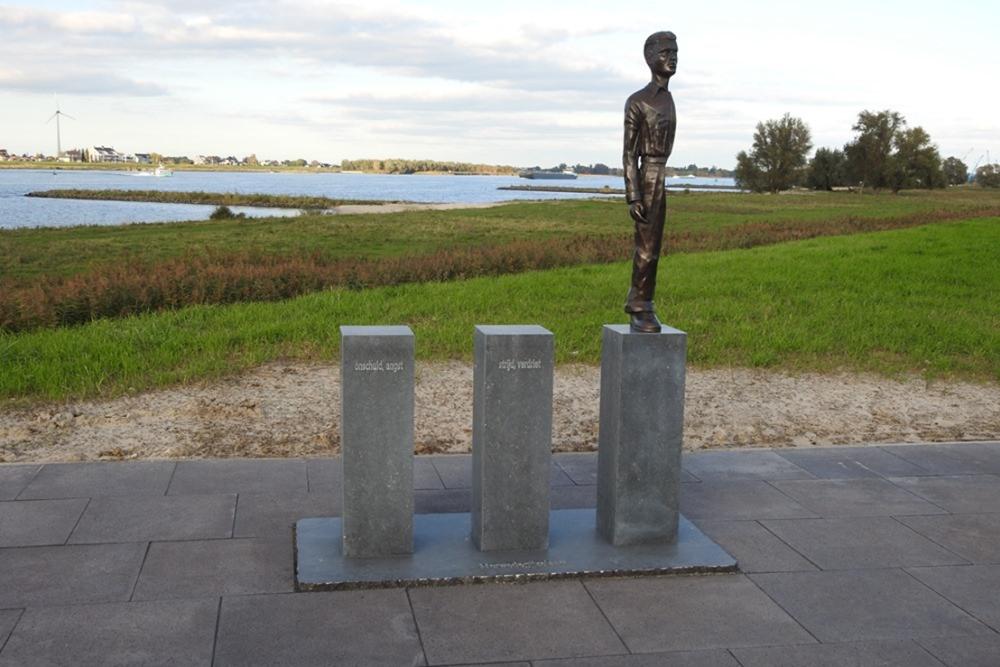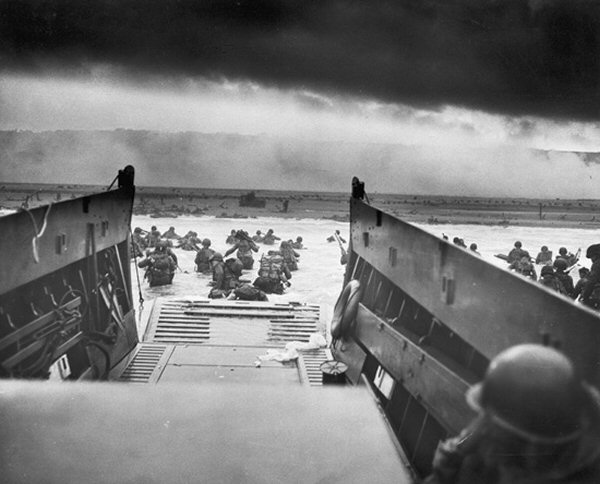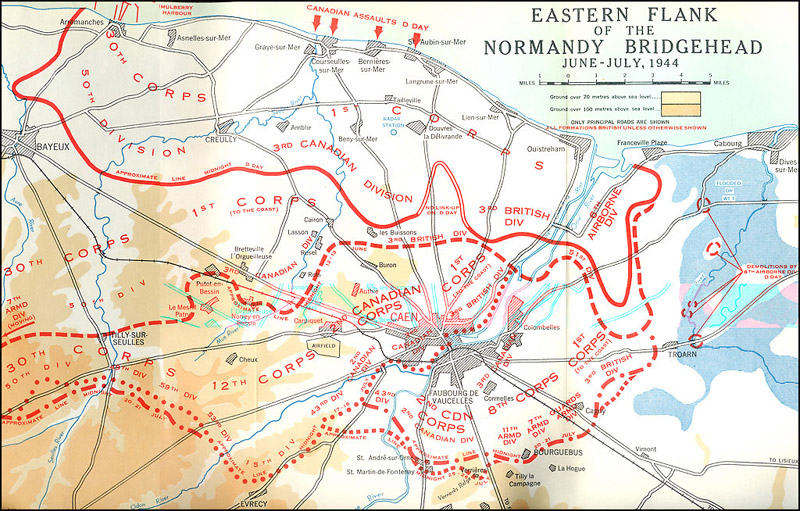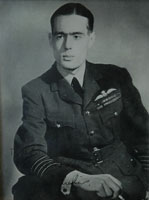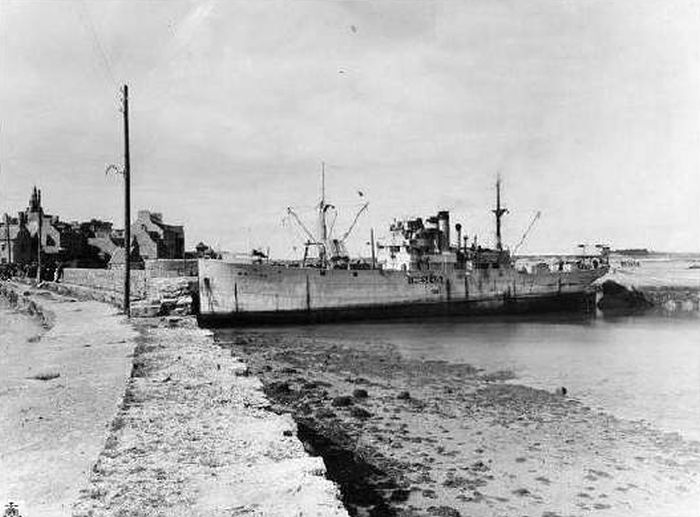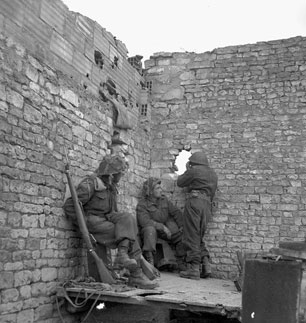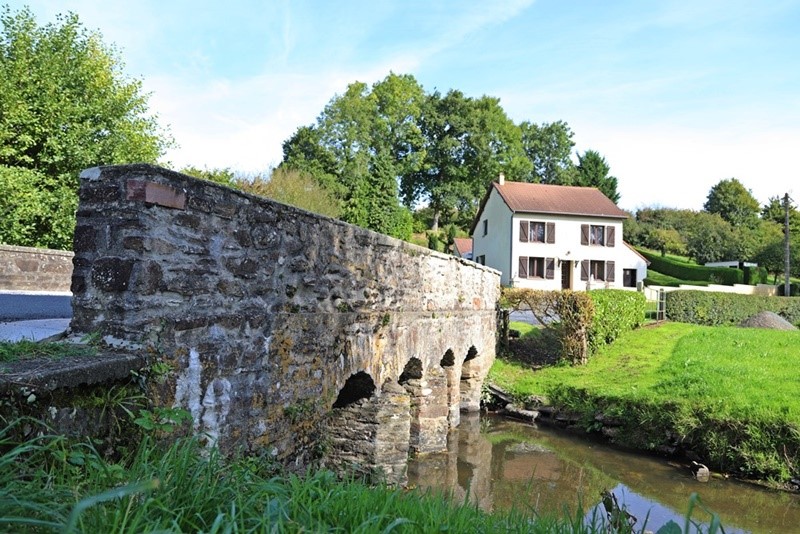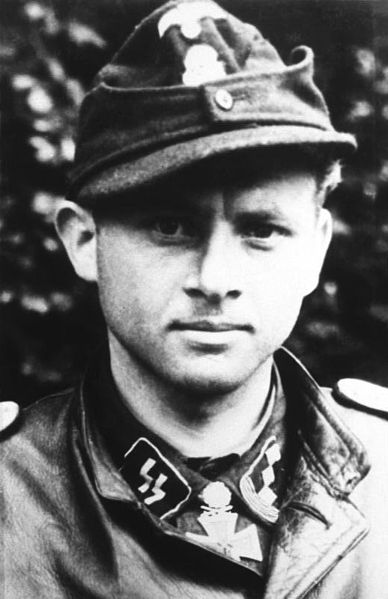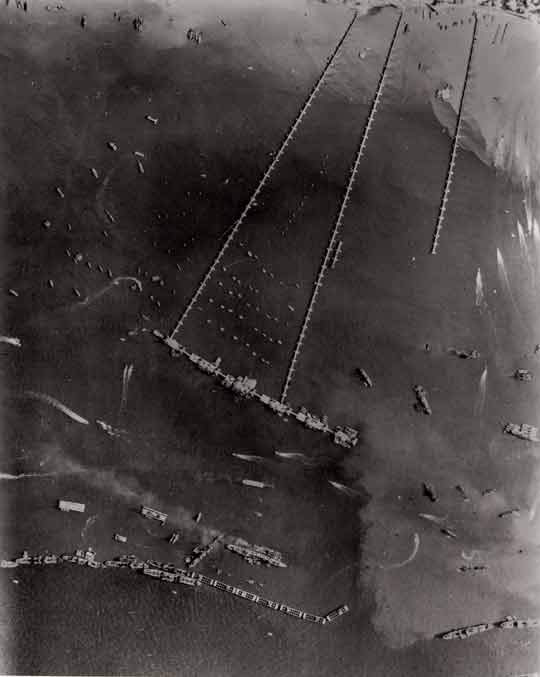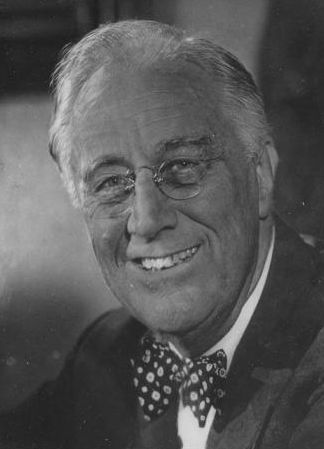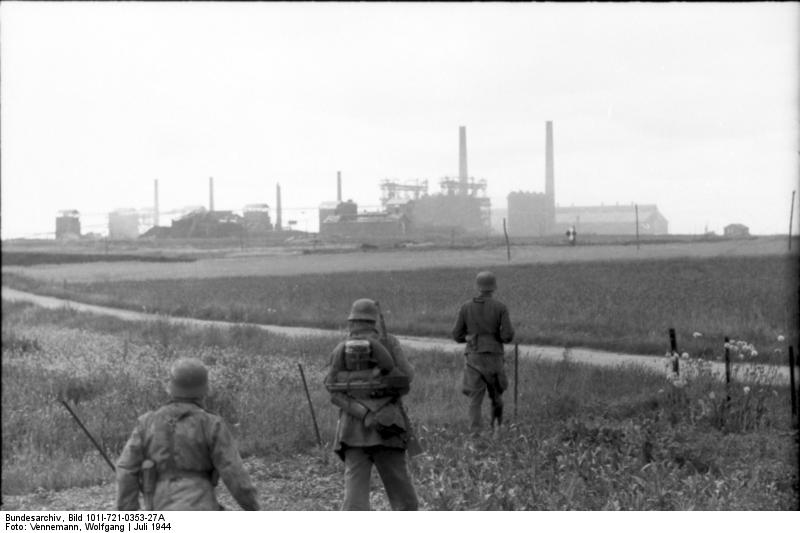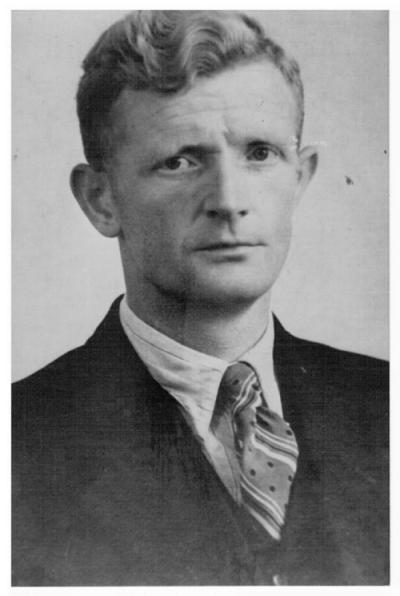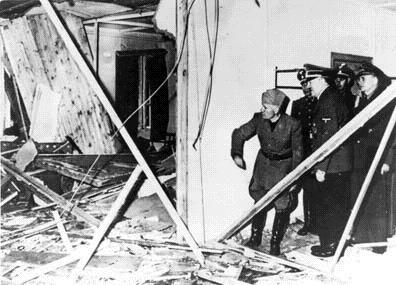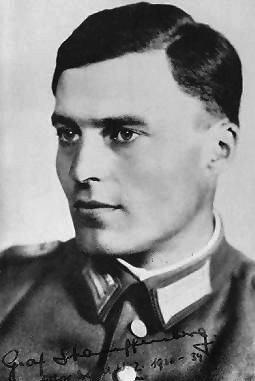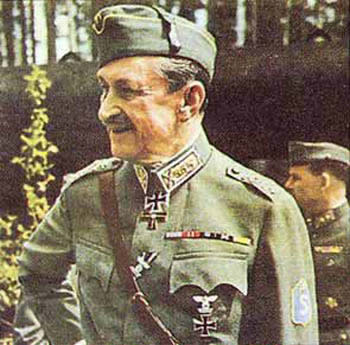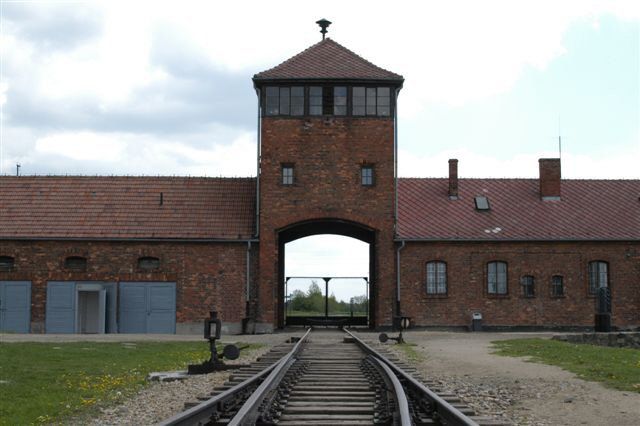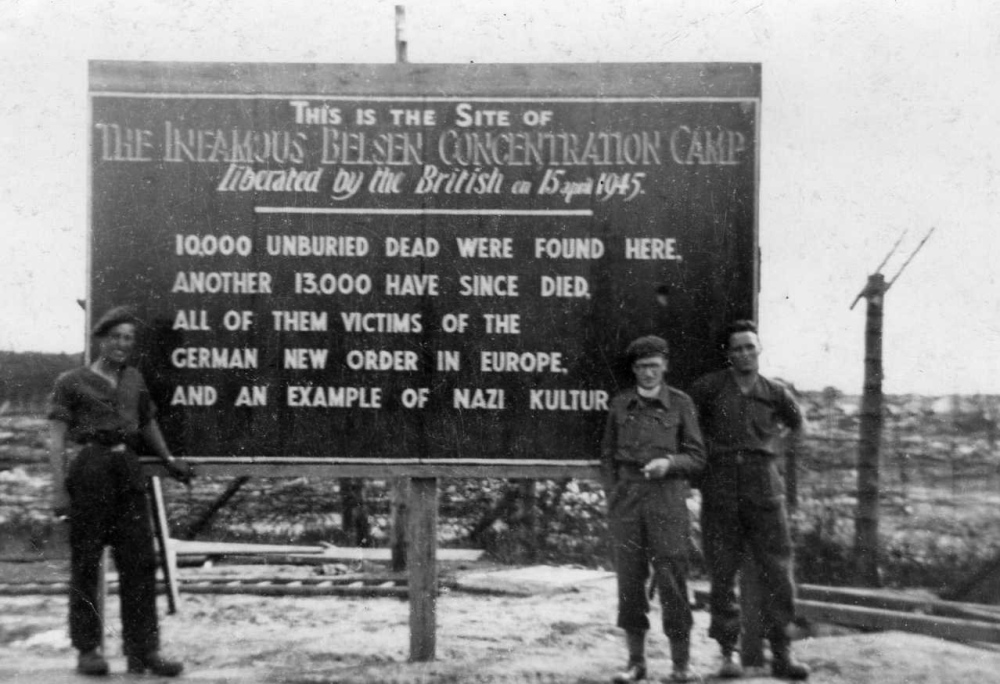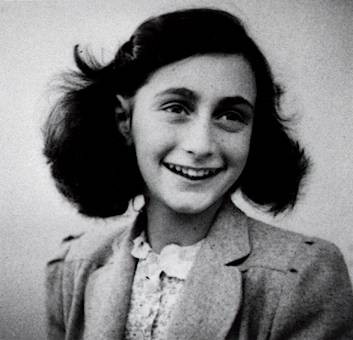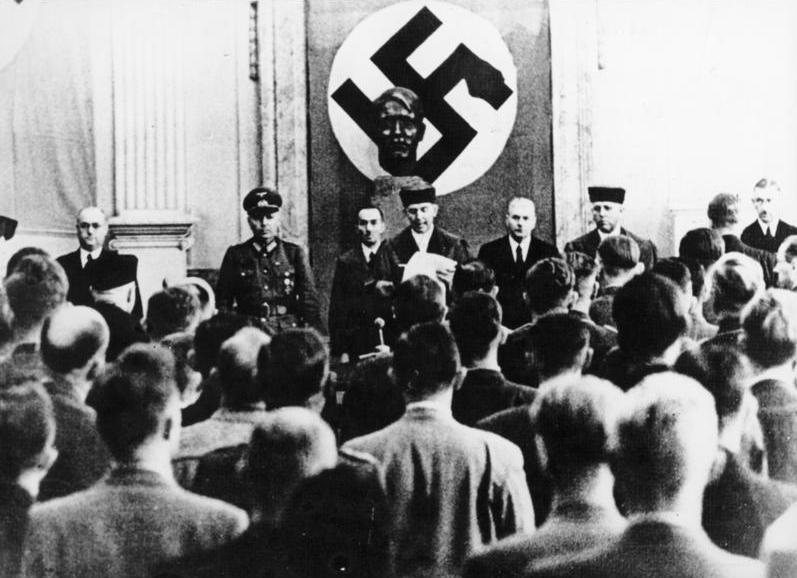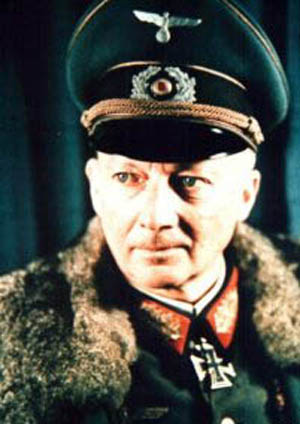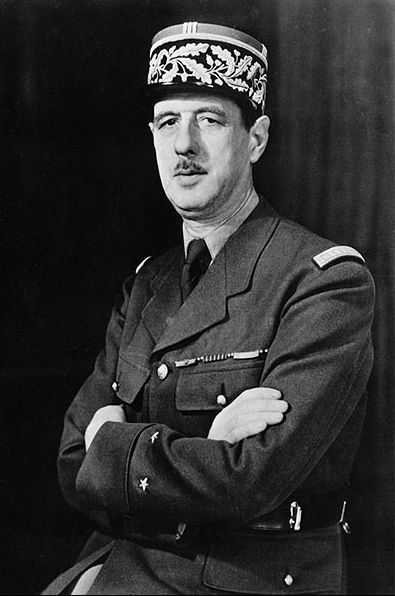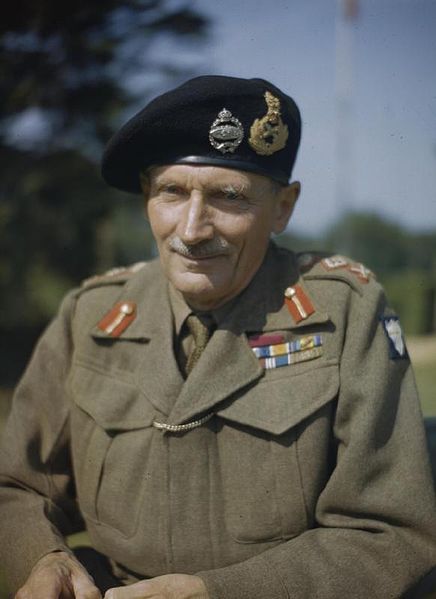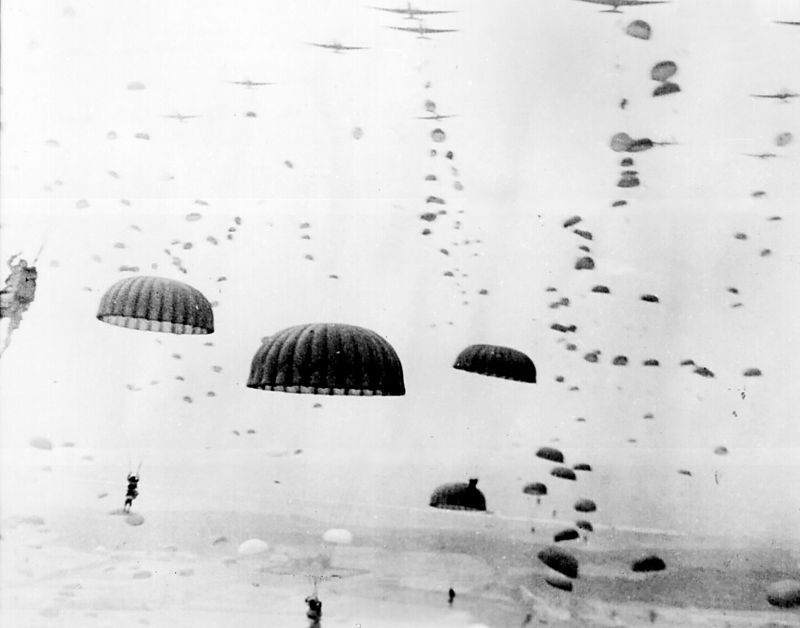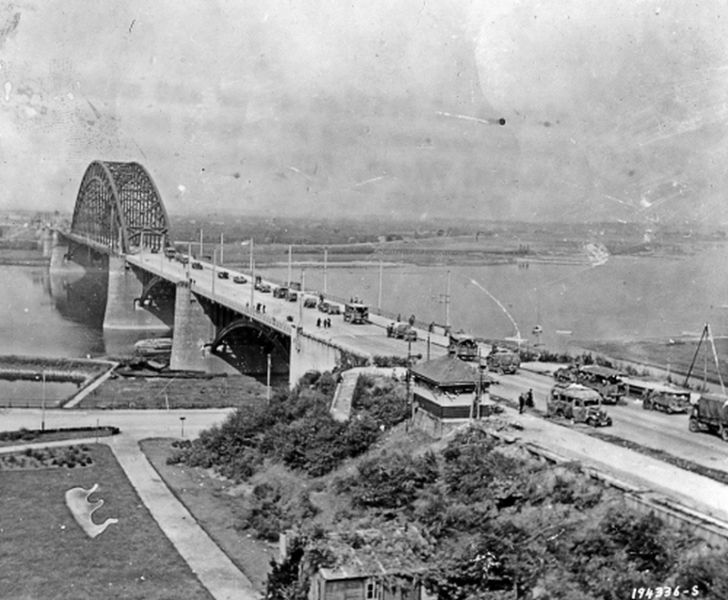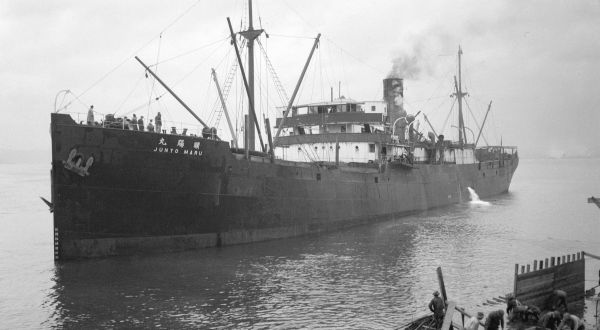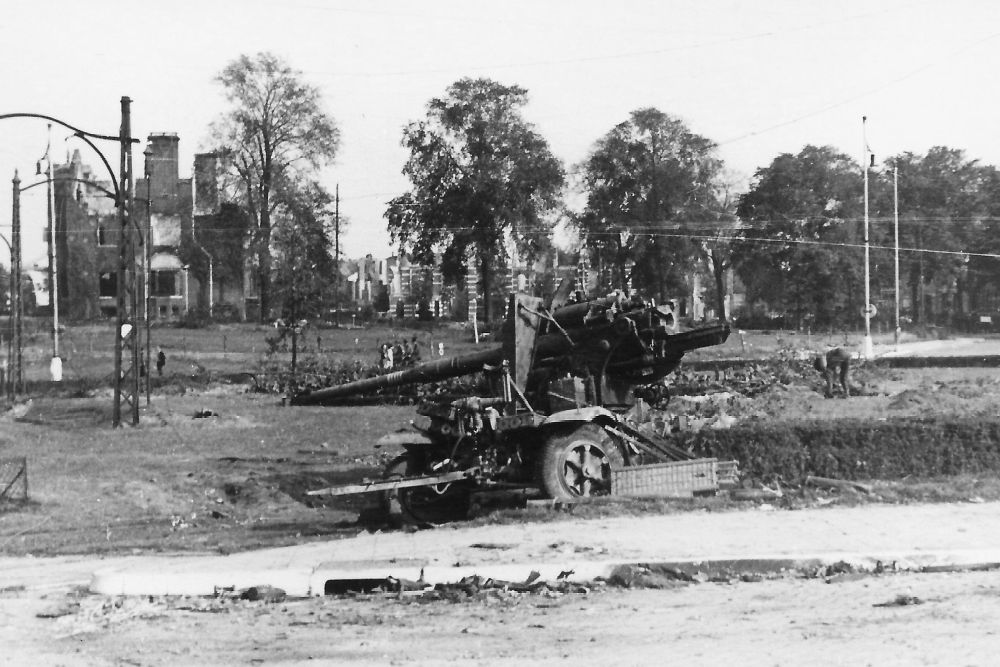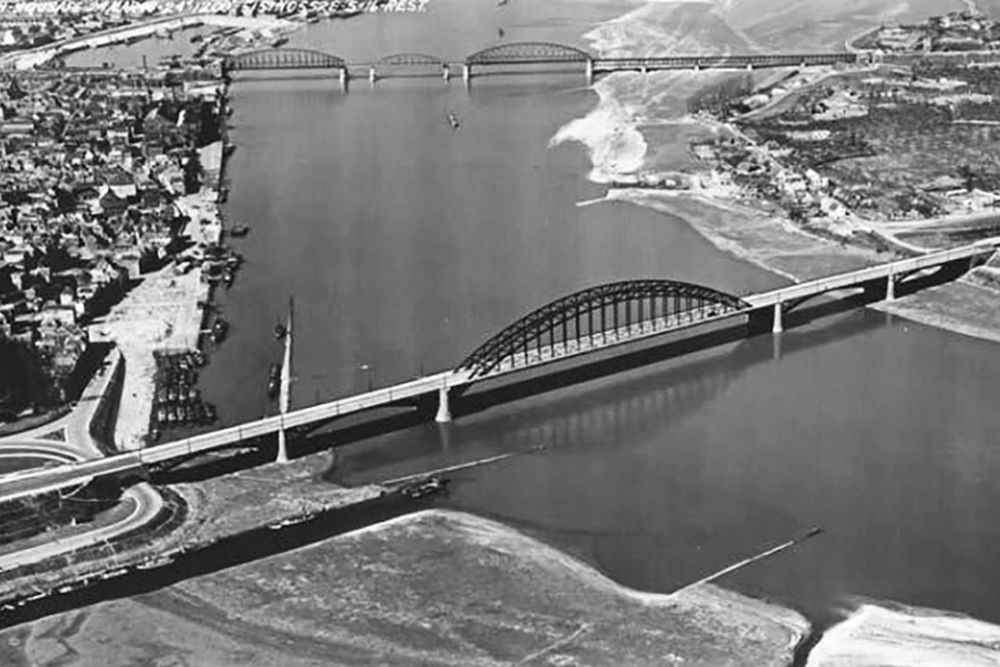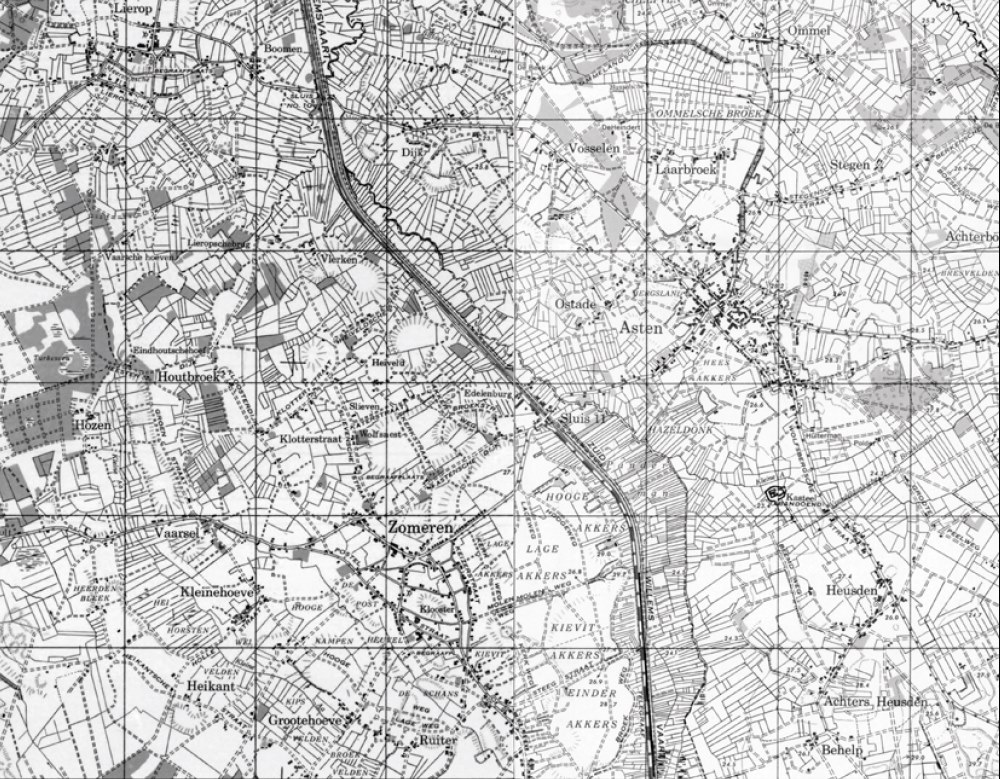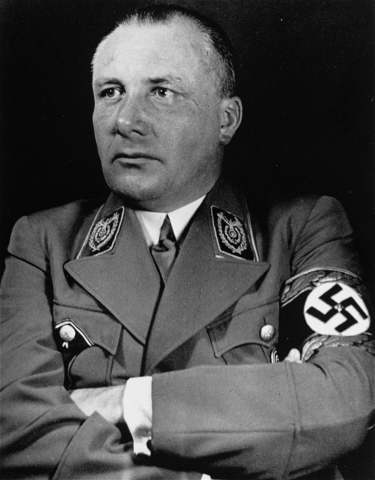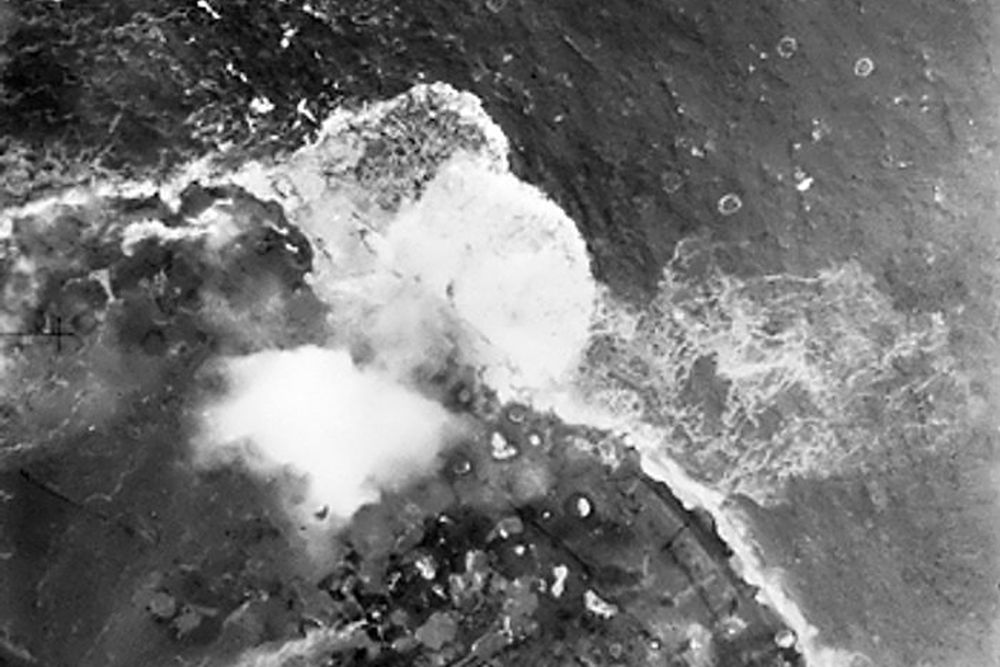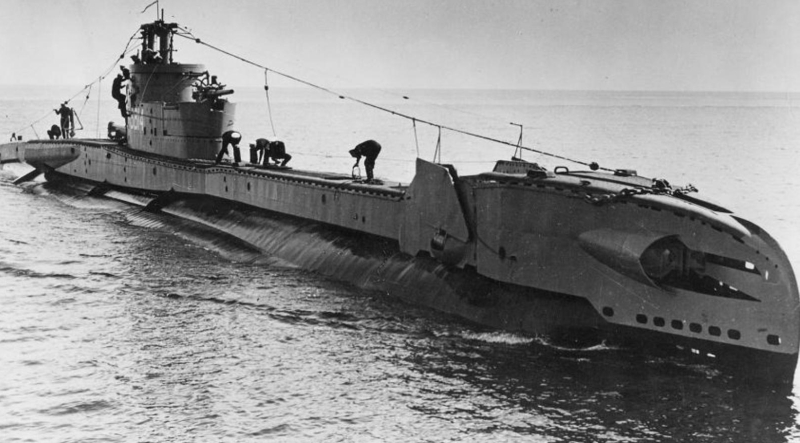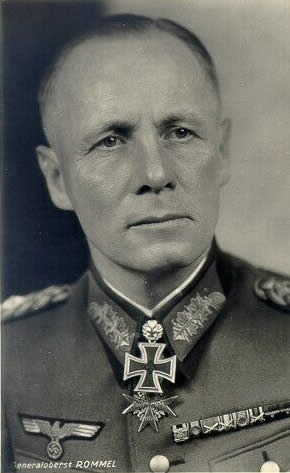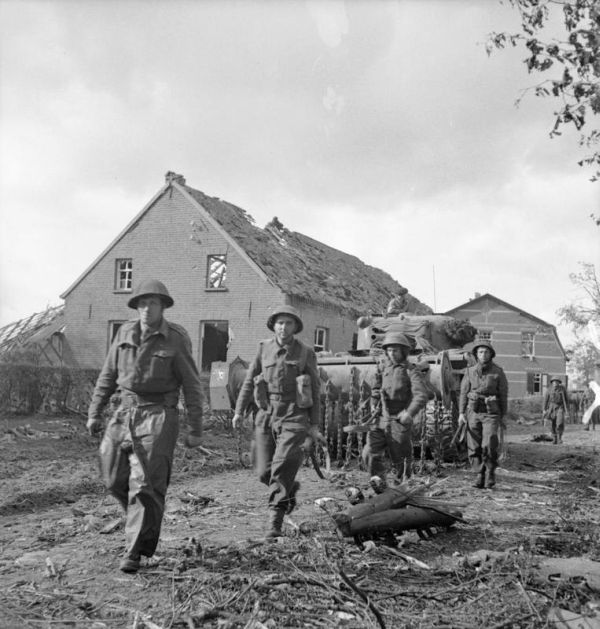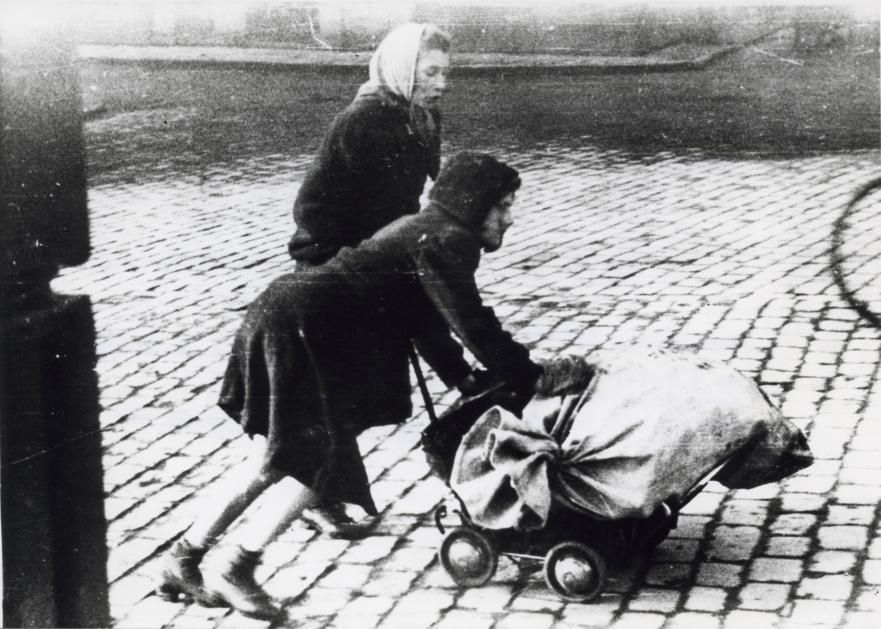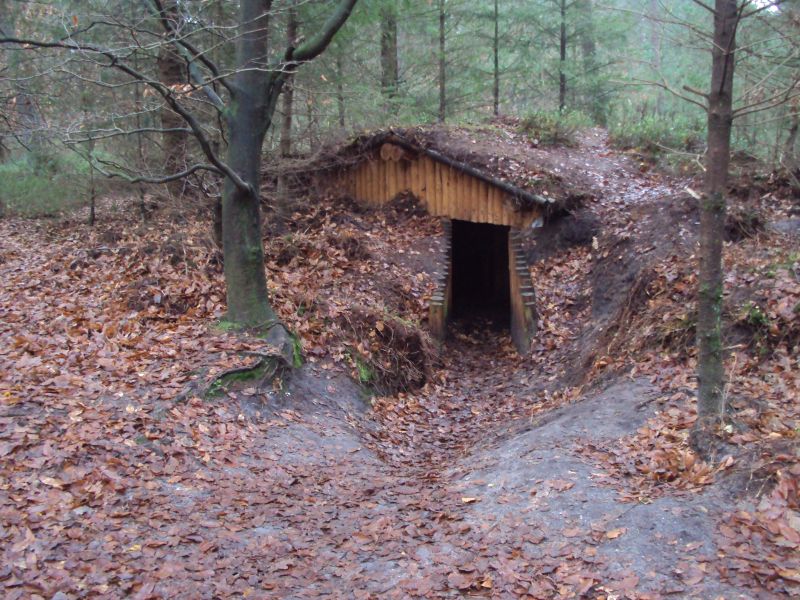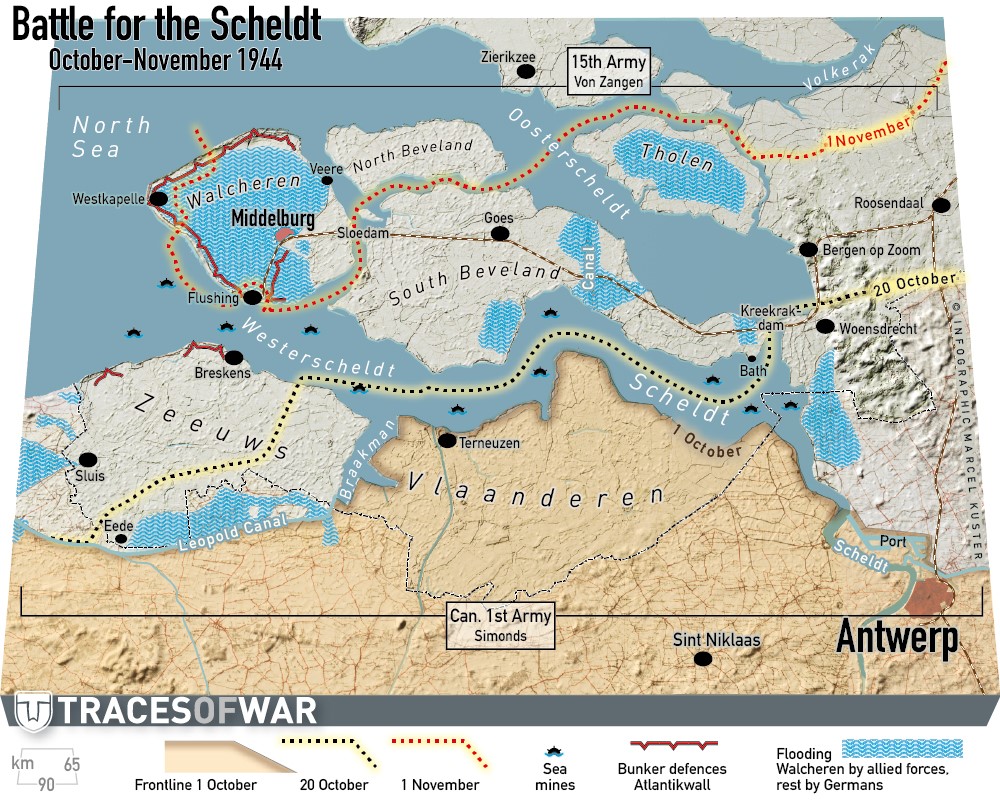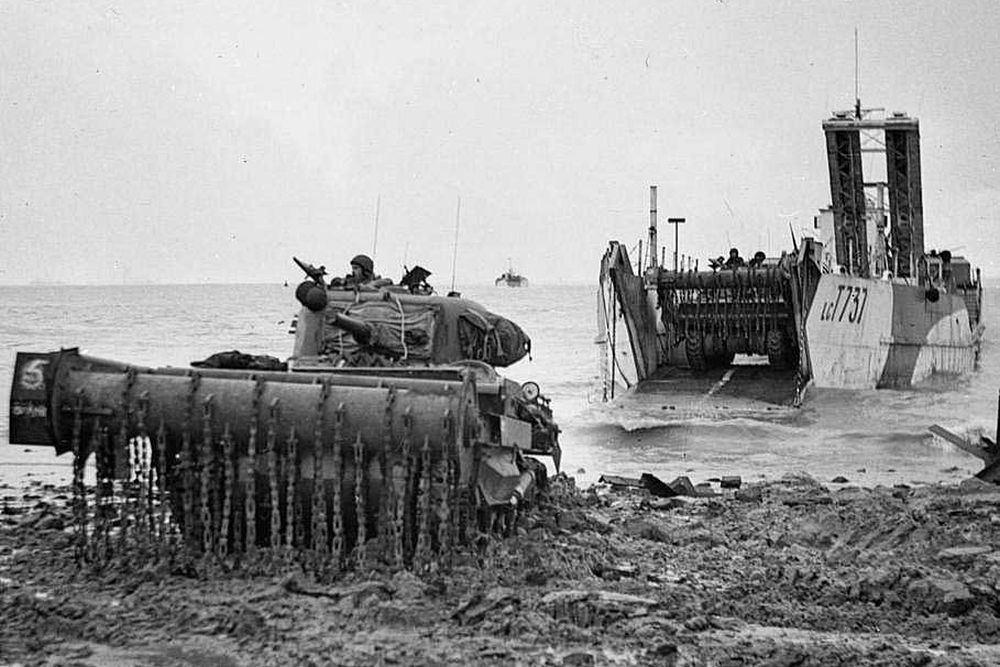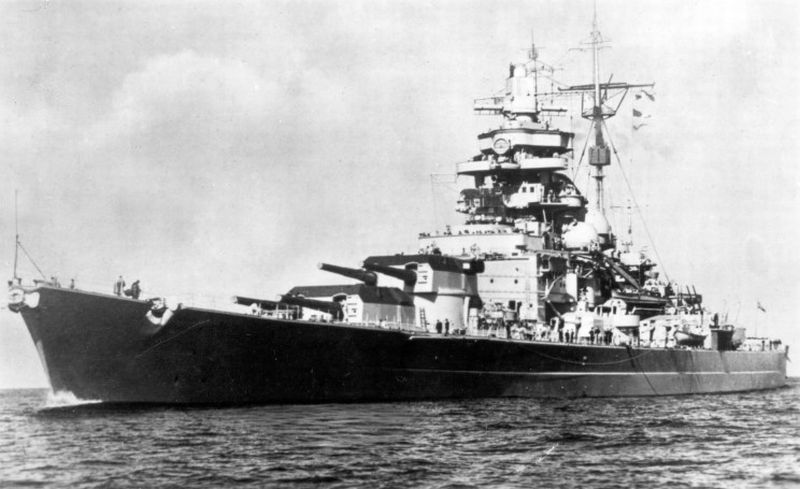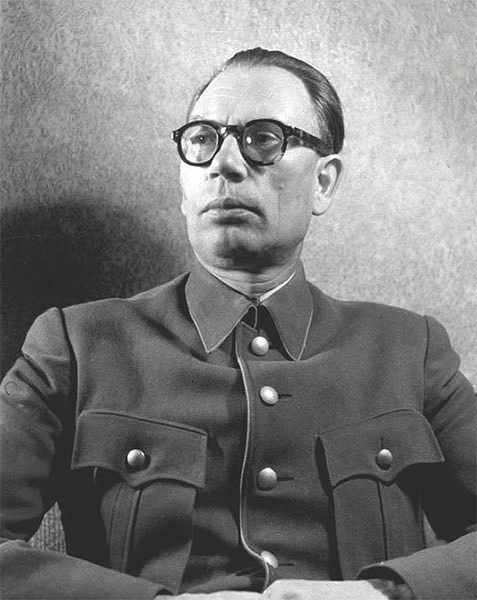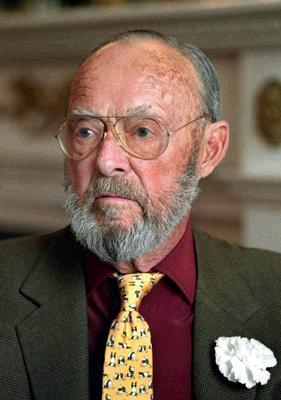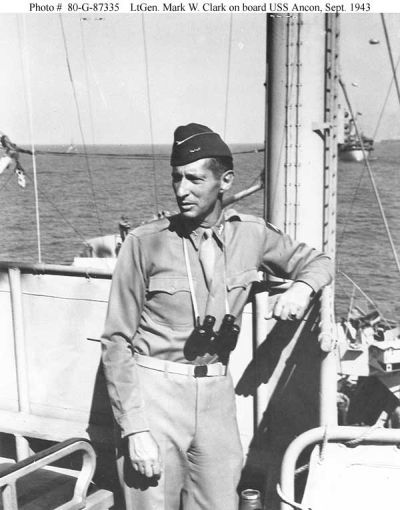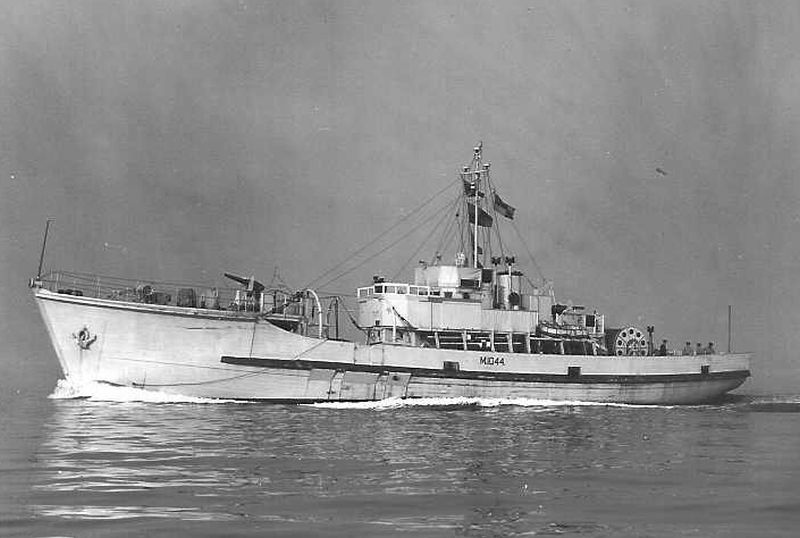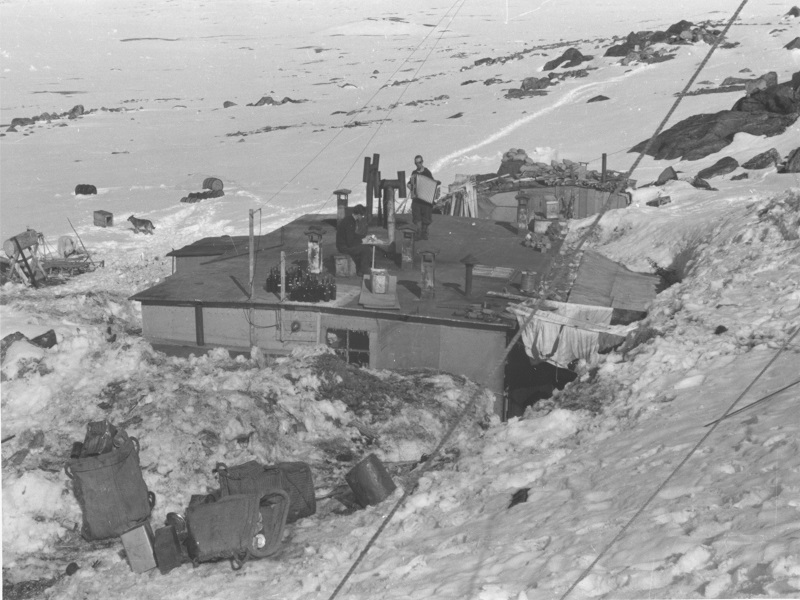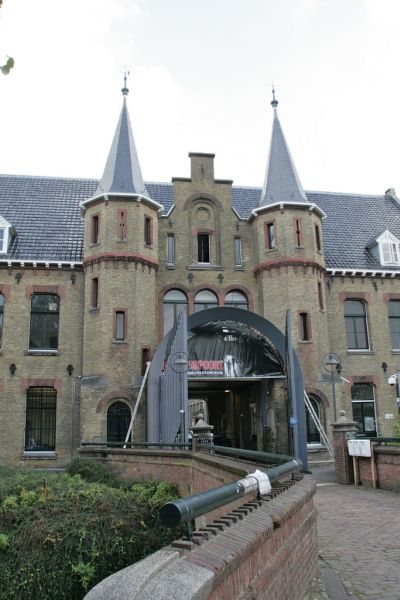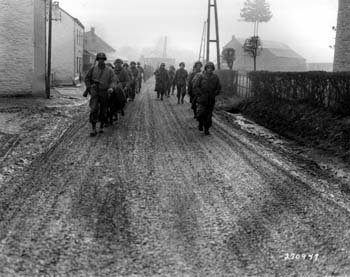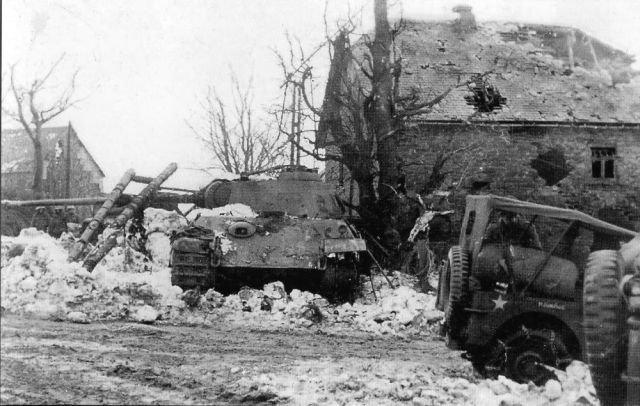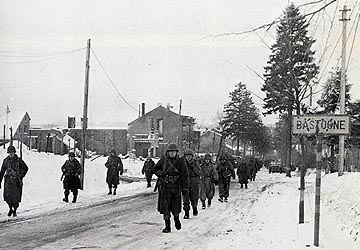-
02-01-1944: In connection with Operation Dexterity, units of the American 6th Army land on the northern coast of New Guinea near Saidor in order to cut off the Japanese rear from its main base in Madang.
-
02-01-1944: General de Lattre de Tassigny is promoted to supreme commander of French forces in North-Africa.
-
03-01-1944: The R.A.F. launches a massive attack on Berlin at the cost of 27 Lancaster’s
-
04-01-1944: Start of Operation Carpetbagger: the regular supply by air of material for the resistance in the Netherlands, Belgium, France and Italy.
-
04-01-1944: The Allies open the offensive against the Gustav line near Rome.
-
05-01-1944: The Polish government in exile allows the Polish resistance to cooperate with the Soviets in case Moscow wants to resume her ties with Poland.
-
06-01-1944: The Soviets cross into Poland.
-
09-01-1944: The Allies attempt to push through in Burma; 15th Corps takes the city of Maungdaw.
-
10-01-1944: The 3rd Ukrainian front commanded by General Rodion Y. Malinovski starts an offensive against Apostolovo which is suspended after six days due to fierce German opposition.
-
11-01-1944: Count Galeazzo Ciano, Mussolini’s son-in-law and former Secretary of Foreign Affairs is executed by a firing squad in Verona.
-
12-01-1944: Near Monte Cassino, the colonial forces of the French Expeditionary Corps commanded by General Alphonse Juin cross the river Rapido in the northern sector of 5th Army.
-
12-01-1944: Churchill and General de Gaulle discuss the arming of French resistance groups in Marrakech.
-
14-01-1944: Eisenhower arrives in London to take up his job as supreme commander of the Allied Forces. He changes the name C.O.S.S.A.C. to S.H.A.E.F. (Supreme Headquarters Allied Expeditionary Forces).
-
14-01-1944: Start of a massive Soviet offensive near Oranienbaum and Wolchow.
-
15-01-1944: "Bunker drama" in Camp Vught. As punishment, for protesting against the treatment of a fellow prisoner, 74 women are locked up in one 9 square meter cell. The next morning it turns out that ten of them suffocated during the night.
-
17-01-1944: The Allies attempt to breach the Gustav line in a frontal attack and an amphibious landing at Anzio behind the German lines.
-
17-01-1944: General Omar Bradley is appointed supreme commander of the American invasion forces.
-
20-01-1944: Air Chief Marshal Sir Arthur Tedder is appointed deputy supreme commander of the Allied forces for Overlord.
-
20-01-1944: A.C.M. Sir Arthur Tedder accepts the post of deputy supreme commander of S.H.A.E.F.; Sir Frederick Morgan is named deputy chief of staff of S.H.A.E.F.
-
22-01-1944: Units of the Allied 6th Corps commanded by General John Lucas land at Anzio. There is hardly any opposition and the road to Rome is wide open.
-
24-01-1944: Allied patrols at Anzio encounter growing German opposition further inland.
-
25-01-1944: The Tilburg stamp crack, one of the most successful raids of the Dutch resistance. 105,000 Rauter stamps are captured without firing a shot. The Germans do not retaliate.
-
26-01-1944: After the discovery of a wide spread spy network of the Axis powers, Argentina severs her ties with Germany and Japan.
-
26-01-1944: After a few days of battle, the Australian 18th Brigade captures the important Japanese position at Kankiryo Saddle.
-
27-01-1944: The siege of Leningrad is lifted after 900 days.
-
30-01-1944: Operation Flintlock: the American conquest of the Marshall islands starts with a landing on the Majuro atoll.
-
31-01-1944: The Americans invade Kwajalein in the Marshals.
-
01-02-1944: Some 40,000 American Marines and riflemen land on the islands of Roi and Namur.
-
04-02-1944: The Germans encircle the Allied bridgehead at Anzio, trapping over 70,000 men and 18,000 vehicles.
-
07-02-1944: Both Kwajalein and the Majuro atoll fall in American hands.
-
08-02-1944: On New Guinea, Australian and American troops meet, ending the 18-week battle for the island.
-
08-02-1944: After an offensive lasting four days, Soviet troops capture Nikopol and drive the Germans back over 684 miles from the east bank of the Dnepr.
-
09-02-1944: Allied bombers plaster German positions at Cassino and Anzio.
-
10-02-1944: French troops in German service are dropped in Morocco in order to prepare for a revolt.
-
10-02-1944: The Japanese battleships in the port of Rabaul are pulled back to New Britain because of the continuous American air raids.
-
11-02-1944: American general Dwight D. Eisenhower becomes supreme commander of the Allied forces in Europe.
-
11-02-1944: Admiral Wilhelm Canaris is fired as chief of the Abwehr. The SD and Abwehr are merged into an overarching secret service.
-
12-02-1944: The Japanese submarine I 27 sinks the British troop transport Khedive Ismail with two torpedoes, 1,297 people lose their lives and 214 are rescued.
-
15-02-1944: Heavy Allied bombardments and artillery barrages on Monte Cassino.
-
16-02-1944: 12 hours after the bombing of Monte Cassino the New Zealand 2nd Division and the Indian 4thj Division launch their attack on the ruins of the convent where the Germans have entrenched themselves. Also known as the second battle for Monte Cassino.
-
16-02-1944: The Germans attempt to eliminate the bridgehead at Anzio with 10 divisions supported by artillery.
-
17-02-1944 - 17-02-1944: The Japanese naval base on Truk in the Carolinas is destroyed by heavy Allied bombardments.
-
18-02-1944: The Americans capture the Eniwetok atoll and with it, capture all Marshall islands.
-
19-02-1944 - 19-02-1944: Massive Allied bombings of the German aviation industry in an attempt to break the power of the Luftwaffe.
-
20-02-1944: The Japanese base on Rabaul is destroyed after heavy bombing.
-
22-02-1944: The 8th Air Force bombs Nijmegen by mistake. Some 600 lives are lost. Enschede is also bombed by mistake, here some 40 lives are lost. Arnhem also falls victim to misidentification and 60 lives are lost.
-
23-02-1944: The Allied offensive on the Marianas is launched.
-
24-02-1944: A team of Rangers commanded by Frank Merrill (Merrill’s Marauders) launches a ground offensive in northern Burma.
-
26-02-1944: The Red Army captures Porkhov and redeploys along the front between Novorzjev and Pustosjka.
-
28-02-1944: General Douglas MacArthur leads the invasion of the Admiralty islands.
-
01-03-1944: The 16th Chindits Brigade crosses the river Chindwin while Chinese troops and Merrill’s Marauders commanded by General Joseph Stilwell advance on Myitkyina.
-
02-03-1944: As Turkey refuses to support the Allies, the country is excluded from the Lend-Lease Agreement.
-
03-03-1944: The two major Greek resistance groups, E.A.M. and E.D.E.S. decide to join forces against the German oppressor.
-
05-03-1944: The 77th Brigade commanded by Brigade general Mike Calvert lands in gliders in two places, code named Broadway and Piccadilly in the Kaukkwe Valley in northern Burma.
-
06-03-1944: Massive American air strikes on Berlin: 658 bombers drop 2,000 tons of bombs on the city.
-
07-03-1944: Members of the NS Frauenschaft (Nazi organization for women) go from door to door to recruit women between the ages of 17 and 45 to eliminate the shortage of workers.
-
08-03-1944: Bombers of the U.S. 8th Air Force launch a massive precision attack on the VKF ball bearing factory at Erkner, southeast of Berlin.
-
11-03-1944: The 2nd Ukrainian front of General Rodion Malinovsky sweeps the opposition of the German 8th Army aside and reaches the river Bug.
-
11-03-1944: The Allies recapture Buthidaung in the Arakan mountain range in northern Burma and encircle and subsequently capture the Japanese fortress at Razabil.
-
15-03-1944: Allied aircraft launch a massive attack on the unoccupied Monte Cassino monastery.
-
15-03-1944: Start of a Japanese offensive towards Imphal and Kohima.
-
18-03-1944: The 2nd Ukrainian front has reached the Dnepr and has established a large bridgehead near Mogilev-Podolsky. The German southern front is split in half and the Soviets are now in a position to advance towards Romania.
-
18-03-1944: During a raid on the city, the British drop 3,000 tons of bombs on the city.
-
19-03-1944: The Red Army closes in on the Balkans so Hitler has Hungary occupied.
-
19-03-1944: A counter attack by the Germans on Hill 193 fails and provides the Allies with a little more breathing space. A New Zealand armored attack on Monte Cassino ends in disaster.
-
20-03-1944: Despite renewed frontal attacks by the New Zealanders commanded by General Harold Alexander, the German defenders, the 1st Fallschirmdivision, remain in and around Monte Cassino.
-
24-03-1944: Major-general Orde Wingate, commander of the Chindits loses his life in an air crash.
-
24-03-1944: The Allied high command approves the postponement of Operation Anvil (a landing in southern France on D-Day) in order to have more landing craft available for Overlord.
-
28-03-1944: The Germans hastily retreat from the south bank of the river Bug. Nikolayev falls in the hands of the Red Army.
-
29-03-1944: The Japanese 20th Division digs in in the Shenam mountains in the beginning of the siege of Imphal.
-
30-03-1944: Hitler is furious about the Russian victories in the Ukraine and sacks Feldmarschalls Von Manstein and Von Kleist for having ignored his Haltebefehl.
-
30-03-1944: The 16th Chindits Brigade, now commanded by Brigade general Bernhard Fergusson withdraws after a failed attack on the major Japanese supply depot at Indaw.
-
31-03-1944: A nocturnal attack on Nuremberg by the R.A.F. causes little damage at the cost of many aircraft.
-
01-04-1944: Aircraft of H.M.S. Victorious and H.M.S. Furious attack the German battle cruiser Tirpitz in the Altenfjord in Norway. The Tirpitz is hit 14 times and is rendered inoperable for months.
-
01-04-1944: With a cynical uncoded telegram, the Germans put an end to the Englandspiel.
-
04-04-1944: The first phase in the battle of Imphal is over. The Japanese failed to break the Allied defense.
-
05-04-1944: The 3rd Ukrainian front captures the railway station of Razdelnaya and cuts the German forces in half. One half retreats towards Odessa, the other towards Tiraspol.
-
06-04-1944: Japanese forces launch an attack on the fortified Chindits position in White City. The position is subsequently abandoned.
-
08-04-1944: The 4th Ukrainian front commanded by Fedor I. Tolbukhin starts the liberation of the Crimea.
-
09-04-1944: The 3rd Ukrainian front reaches the outer suburbs of Odessa.
-
10-04-1944: Rudolf Vrba and Alfred Wetzler escape from Auschwitz. They fled to Slovakia where they informed the Jewish Council about the Holocaust.
-
11-04-1944: Six RAF fighter-bombers of 613 Squadron are carrying out an attack on Vila Kleykamp in The Hague, where duplicates of all issued identity cards are kept (shadow archive). The building is destroyed, but less than half of the shadow archive is destroyed. There are also 59 civilian deaths.
-
12-04-1944: The Finnish government rejects the Soviet demand to end the war.
-
14-04-1944: Turkey finally decides to support the Allies.
-
14-04-1944: 5,200 Jews from Athens arrive in Auschwitz.
-
15-04-1944: The 8th Air Force and R.A.F. Bomber Command decide to attack railway lines in Belgium and France in preparation for the coming invasion.
-
17-04-1944: The last offensive by the Japanese in China begins with air strikes against American air force bases in eastern China.
-
22-04-1944: General Douglas MacArthur and some 52,000 Allied soldiers go ashore in Hollandia in the north of Dutch New Guinea.
-
22-04-1944: The Sikorsky R-4 helicopter is being deployed operationally for the first time by the US military in India.
-
30-04-1944: In Rawitsch (Rawicz) seven Dutch SOE agents arrested within the framework of the Englandspiel are executed.
-
02-05-1944: Spain suspends her deliveries of tungsten to Germany where after the American oil embargo against the country is lifted.
-
03-05-1944: Admiral Sumu Toyoda is appointed commander-in-chief of the Japanese Imperial Fleet. He succeeds Admiral Mineichi Koga who lost his life in an air crash on March 31.
-
08-05-1944: Höss returns to Auschwitz to oversee the extermination of the Hungarian Jews.
-
09-05-1944: The 4th Ukrainian front liberates the port of Sevastopol. The German suffer a crushing defeat, losing some 100,000 men, killed or captured.
-
11-05-1944 - 11-05-1944: In the fourth battle for Monte Cassino, the British and Poles finally gain victory.
-
15-05-1944: Start of the deportation of Hungarian Jews to Auschwitz.
-
16-05-1944: In reprisal for an attack by the Dutch resistance, the Germans carried out raids in a number of villages on the Merwede River. About 600 young men are arrested. 28 of them will not survive their prisonment in German camps.
-
18-05-1944: The last pockets of resistance on the Admiralty islands are cleared. The large bases in the southwestern Pacific near Rabaul and Kavieng are now sufficiently isolated.
-
19-05-1944: After the Great Escape from Stalag Luft III near Sagan in Silesia, 50 air force officers who have been captured again are executed by the Gestapo. Only three out of a total of 76 escaped prisoners reach Great Britain.
-
23-05-1944: Troops of the American 6th Army Corps break out of the bridgehead on the beach at Anzio, despite fierce German resistance.
-
23-05-1944: Canadian units capture Ponte Corvo and breach the Adolf Hitler line.
-
25-05-1944: The Germans attack the partisan headquarters near Divar with mortars and gliders. Tito barely escapes.
-
25-05-1944: The German 10th Army withdraws to the Caesar line in Italy.
-
27-05-1944: Beginning of the Allied invasion of the island of Biak in Dutch New Guinea.
-
29-05-1944: On the island of Biak near Hollandia the first American tank battle in the war is waged against Japan. The Americans are victorious.
-
29-05-1944: The American escort aircraft carrier USS Block Island is sunk off the Canary Islands by U-549. Six crew members are killed.
-
31-05-1944: In Roosendaal, the area around the railway station is hit by stray bombs during an attack by the 8th Air Force on the railway junction. 73 people are killed.
-
01-06-1944: Brigade general Mike Calvert reaches Lakum near Mogaung with his 77th Chindits Brigade.
-
01-06-1944: The Belgian resistance organization, the Leger of België, is renamed the Geheim Leger (Secret Army). The task of this group is to destroy railways and other transport facilities after an Allied invasion.
-
03-06-1944: After 64 days of fighting, the battle of Kohima ends with the orderly retreat of the Japanese 31st Division.
-
03-06-1944: Hitler reluctantly permits Feldmarschall Albert Kesselring, the German commander in Italy, to evacuate Rome.
-
04-06-1944: The Americans drive into Rome: the first capital of an Axis power is captured.
-
04-06-1944: Eisenhower gives the order to begin Operation Overlord on June 6.
-
05-06-1944: The B.B.C. informs the French resistance about the time of the invasion by sending a coded message: "Blesse mon coeur avec un douleur monotone".
-
05-06-1944: First mission by B-29 bombers to attack a railway junction in Bangkok, Siam (Thailand).
-
06-06-1944: D-Day: the largest amphibious invasion in history has begun.
-
06-06-1944: British Airborne troops capture the Bénouville Bridge over the Canal at Caen, now known as Pegasus Bridge.
-
06-06-1944: American Rangers land at Pointe du Hoc and manage to conquer the cliff.
-
07-06-1944: A Canadian attack on Carpiquet airfield comes to a standstill due to German resistance.
-
08-06-1944: The Secret Army (see also 01-06-1944) is officially ordered to take action, including 95 railway bridges are blown up by them. They receive official congratulations from Dwight Eisenhower for their successful performance.
-
08-06-1944 - 08-06-1944: The British No. 617 Squadron successfully bombs the railway tunnel at Saumur.
-
09-06-1944: The Soviet 21st and 23rd armies launch an offensive in Karelia to push the Finns back to the border of 1940 and force them to sue for peace.
-
09-06-1944: The Dutch naval vessel Hr. Ms. Sumatra is sunk off the coast of Ouistreham by means of explosive charges to serve as a breakwater.
-
10-06-1944: As a result of the continuing attacks on the SS-Panzerdivision das Reich by the resistance; the Germans take revenge on the village of Oradour-sur-Glane, 642 people are killed.
-
10-06-1944: The two escaped and arrested SOE agents Van der Giessen and Van Rietschoten are executed near Kamp Haaren.
-
10-06-1944: The Dutch resistance fighter Gerrit Jan van der Veen, together with seven others, is executed by a German firing squad in the dunes of Overveen.
-
11-06-1944: Task Force 58 starts shelling the islands of Saipan, Tinian, Guma, Rota and Pagan heavily in preparation of the attack on the Marianas.
-
11-06-1944: A Canadian attack on the village of Le Mesnil Patry ends in complete failure as a result of a German counterattack. 37 Canadian tanks are eliminated.
-
12-06-1944: American troops manage to cross the river Elle after heavy fighting.
-
13-06-1944: SS-Obersturmführer Michael Wittman, company commander of the Schwere SS-Panzerabteilung 101 destroys at least nine tanks of the 4th County of London Yeomanry, 7th Armored Division in an engagement near and in the village of Villers-Bocage.
-
13-06-1944: The first V-1s come down near Swanscombe in Great Britain.
-
15-06-1944: The Japanese Imperial Fleet is ordered to prepare for Operation A-go. The intention is to lure the American fleet to the Palau islands or the western Carolinas and destroy it.
-
15-06-1944: The American northern Task Force arrives off Saipan. The U.S. 2nd and 4th Marines land on the west coast of the island.
-
15-06-1944: B-29s of the American 20th Army, stationed in China, bomb the iron and steel works in Yahata, Japan.
-
18-06-1944: American troops reach the west coast of the Cotentin peninsula, encircling the German garrison in Cherbourg. Hitler has ordered the garrison, some 40,000 strong, to hold out to the last man.
-
19-06-1944: The Marianas Turkey Shoot: Over the Marianas 220 Japanese aircraft are shot down at the cost of just 20 American aircraft.
-
19-06-1944: The Japanese aircraft carrier Shokaku, participating in Operation A-Go, is sunk near the Marianas by the submarine USS Cavalla.
-
19-06-1944 - 19-06-1944: Heavy storms damage the Mulberry harbor near Arromanches and destroy the artificial harbor at Saint Laurent.
-
20-06-1944: Perugia is in British hands. The British 8th Army launches the attack on the Albert line, one in a belt of German key positions in northern Italy. The fighting is ferocious and the Germans do not cede ground easily.
-
20-06-1944: Soviet forces capture Vyborg, opening the Gulf of Finland to the Soviet fleet.
-
22-06-1944: The German Secretary of Foreign Affairs, Joachim von Ribbentrop visits Helsinki in an attempt to strengthen the relations between Finland and Germany.
-
22-06-1944: Units of the British 2nd Division reach the defenders of Imphal but the Japanese keep resisting fiercely and fanatically.
-
23-06-1944: The Red Army launches an offensive in Byelorussia. The first Baltic, the 1st, 2nd and 3rd Byelorussian fronts (a total of 1,2 million men) attack the German divisions of Heeresgruppe Mitte.
-
25-06-1944: The British launch Operation Epsom, the advance west of Caen. Troops and tanks of the 15th, 43rd and 11th Armored Divisons initially make good progress but come to a halt after severe losses.
-
27-06-1944: American troops liberate Cherbourg.
-
29-06-1944: The port of Cherbourg finally surrenders to the American 7th Corps. The Americans count 22,000 victims; 39,000 Germans are taken prisoner.
-
29-06-1944: The Japanese troop transport Toyama Maru carrying 6,000 Japanese soldiers is sunk by the submarine U.S.S. Sturgeon. 5,600 men lose their lives.
-
29-06-1944: The American submarine U.S.S. Rasher first sinks the Japanese cargo vessel Tango Maru carrying 3,500 slave laborers and prisoners-of-war near Lombok and later on the Japanese troop transport Ryusei Maru carrying 6,000 Japanese soldiers. Aboard Tango Maru, some 3,000 lives are lost, aboard the Ryusei Maru some 5,000.
-
29-06-1944: The R.A.F. launches heavy air strikes (250 Lancasters) against the 2nd and 9th SS-Panzerdivision in Villers-Bocage near Caen.
-
30-06-1944: The Germans have the first squadron of operational jet fighters at their disposal, the Me 262. 1/KG 51 will be deployed in France at short notice.
-
30-06-1944: Until this day, some 2,000 V-1s have been fired at Great Britain, mostly on London.
-
01-07-1944: In July Seys-Inquart will draw up a final report on the Jewish question in the Netherlands.
-
02-07-1944: The British 13th Corps captures Foiano west of Lago di Trasimeno and with it, finally breach the Albert line.
-
03-07-1944: The Soviets capture the Byelorussian capital of Minsk.
-
04-07-1944: The Red Army starts clearing the Baltic states; the 1st, 2nd and 3rd Baltic fronts take on the job.
-
04-07-1944 - 04-07-1944: The village of Carpiquet and part of the airfield are captured by the Canadians during Operation Windsor.
-
07-07-1944: 467 British bombers carried out a heavy bombing raid on the city of Caen in support of the ground offensive. There are 300 to 400 civilian deaths.
-
08-07-1944: As the Red army is closing in fast on Hungary, Admiral Miklós Horthy orders to stop the deportation of Hungarian Jews to Auschwitz extermination camp.
-
08-07-1944: Japan withdraws from Imphal.
-
09-07-1944: British and Canadian troops enter Caen.
-
11-07-1944: President Roosevelt announces he will try to run for a fourth term as president.
-
11-07-1944: The pocket around Minsk falls in Soviet hands. The Germans lose 70,000 dead and 35,000 taken prisoner. The German 4th Army no longer exists.
-
11-07-1944: Operation Stack, a British attack aimed at destroying Colombelles' high factory chimneys, used by the Germans as an observation post, failed. Ten British tanks are eliminated.
-
13-07-1944: Vilnius, the Lithuanian capital falls in Soviet hands.
-
16-07-1944: After being arrested the previous day, Johannes Post, one of the leaders of the Landelijke Knokploegen, was executed together with thirteen other members of the resistance in the Dunes near Overveen.
-
17-07-1944: Units of the Soviet 1st Tank Army cross the river Bug into Poland.
-
18-07-1944: Despite fanatical resistance, American troops enter St. Lô and destroy the 352 Küstendivision.
-
19-07-1944: Guam in the Marianas is invaded by American troops.
-
20-07-1944: Revolting German officers make a failed attempt on Hitler’s life at the Wolfsschanze near Rastenburg.
-
21-07-1944: The Polish Committee for National Liberation is established in Lublin. Its seat is Lublin as well.
-
21-07-1944: Claus von Stauffenberg is executed along with three co-conspirators in the courtyard of the Ministry of War on Bendlerstrasse.
-
22-07-1944 - 22-07-1944: The Soviets liberate concentration camp Majdanek– where 360,000 people have been murdered – and concentration camp Lublin.
-
23-07-1944: Pisa is in American hands.
-
23-07-1944: Wilhelm Canaris is arrested and interned in an officers' school in Fürstenberg in the aftermath of the July 20 attack.
-
25-07-1944 - 25-07-1944: Operation Cobra: the Americans attempt to push through west of St. Lô.
-
27-07-1944: American troops complete the liberation of Guam.
-
28-07-1944: Soviet forces capture Brest-Litovsk.
-
29-07-1944: The British landing ship HMS Prince Leopold is torpedoed in the Channel near Nab Tower by the U 621. 17 crew members are killed.
-
01-08-1944: Beginning of the uprising of the Polish Armja Krajowa (National Army) in Warsaw.
-
01-08-1944: Finnish president Ryti steps down and is succeeded by General Mannerheim.
-
01-08-1944: The Gypsy camp in Birkenau is closed; some 4,000 Gypsies are gassed.
-
01-08-1944: In Palestine in August, 200 Jews from Bergen Belsen and a few dozen from Vittel are exchanged for ethnic Germans.
-
02-08-1944: Turkey severs her economic and diplomatic ties with Germany.
-
03-08-1944: After a siege lasting two months, American and Chinese forces capture Myitkyina.
-
04-08-1944: German offensive against the rebels in Warsaw.
-
04-08-1944: The British 8th Army reaches the suburbs of Florence. The entire city is in British hands on August 13.
-
04-08-1944: In Amsterdam, Anne Frank and her family are arrested by the Gestapo.
-
04-08-1944: The American submarine U.S.S. Ray sinks the Japanese transport vessel Koshu Maru carrying 1,513 Indonesian workers, war materials and 540 passengers. 273 passengers, 28 crew members and 1,239 workers lose their lives.
-
06-08-1944: With the liquidation of the Lodz ghetto the last one in Poland is cleared.
-
08-08-1944: The entire Marianas chain is in American hands.
-
08-08-1944: Hauptsturmführer Michael Wittmann's Tiger is destroyed near Cintheaux by Sergeant Douglas Gordon's Sherman Firefly, killing all five crew members.
-
08-08-1944: Eight persons suspected of involvement in the attack on Hitler (see 20-07-1944) are convicted by the People's Court and executed the same day in Plötzensee.
-
11-08-1944: Operation Haft, which started on July 8 and consisted of a reconnaissance mission of ten SAS members south of Mayenne, is coming to an end.
-
12-08-1944: Polish troops breach the German Gothen line near Pesaro.
-
12-08-1944: The Soviet Union demands Bulgaria and Germany sever their ties.
-
14-08-1944: St. Malô is recaptured from the German forces.
-
14-08-1944: The French resistance is tipped off about the imminent landings in southern France, Operation Dragoon.
-
17-08-1944: Falaise is captured by the Canadian 2nd Division. In the south of France, a continuous bridgehead is established, some 46.5 miles wide.
-
18-08-1944: Owing to a navigational error, a suburb of Maastricht is bombed by the 8th Air Force instead of the bridges on the River Meuse. 91 lives are lost.
-
19-08-1944: Because of his involvement in the plot of July 20, Von Kluge commits suicide on his way to Berlin and is succeeded by Walter Model.
-
20-08-1944: General de Gaulle sets foot on French soil in Cherbourg.
-
20-08-1944: The Allies encircle German troops in the Falaise pocket.
-
22-08-1944: The Japanese vessel Tsushima Maru carrying 1,788 Japanese evacuees from Okinawa, including many children is sunk by the submarine U.S.S. Bowfin off Okinawa. 1,529 passengers and crew lose their lives; out of the 741 children, 59 are rescued.
-
23-08-1944: Coup-d’état in Romania; the new leadership accepts the Soviet conditions for an armistice.
-
23-08-1944: Switzerland and Vichy-France sever their ties.
-
23-08-1944: Sammellager (transit camp) Drancy is liberated.
-
24-08-1944: Romania severs all ties with Germany.
-
24-08-1944: Ernst Thalmann, leader of the KPD (German Communist Party) is murdered in Buchenwald.
-
25-08-1944: General von Choltitz surrenders: Paris is back in Allied hands.
-
25-08-1944: Romania declares war on Germany.
-
29-08-1944: Mihailovic is ousted on orders of the Yugoslav King Peter; Tito is the acknowledged leader of the armies of liberation.
-
31-08-1944: The British 2nd Army enters Amiens while the Americans reach the banks of the Meuse. Bordeaux is also liberated.
-
31-08-1944: Units of the 2nd Ukrainian front capture Bucharest.
-
01-09-1944: Arras, Dieppe, Rouen and Verdun are liberated by Allied soldiers.
-
01-09-1944: General Patrick Hurley is named personal envoy of Roosevelt to the Chinese government in Tsjunking; he makes attempts at mediation between the various Chinese factions.
-
01-09-1944: In Bulgaria, the Bagrjanov government resigns.
-
01-09-1944: Flakregiment 155 withdraws from France to Deventer in the Netherlands via Antwerp. It has launched some 9,000 V-1s.
-
02-09-1944: Finland wants to end the war and sever her ties with Germany.
-
03-09-1944: French liberation forces move into Lyon.
-
03-09-1944: The British reach Tournay; the Americans cross the border at Maubeuge and Hirson and drive through to Mons.
-
03-09-1944: General order by Eisenhower to the British 2nd Army to advance to the Rhine as fast as possible.
-
03-09-1944: The British cross the Belgian border near Lille; they push on to Brussels. The Americans liberate Mons.
-
03-09-1944: Brussels is liberated.
-
04-09-1944: British armored forces move into Antwerp while other British troops cross the Meuse between Dinant and Namur.
-
04-09-1944: The Soviet Union and Finland sign an armistice.
-
04-09-1944: Antwerp is liberated.
-
05-09-1944: The Soviet Union declares war on Bulgaria and Bulgaria declares war on Germany.
-
05-09-1944: The Netherlands, Belgium and Luxembourg sign the Benelux treaty.
-
05-09-1944: Units of the 2nd Ukrainian front reach the border between Romania and Yugoslavia near Turnu Severin.
-
05-09-1944: Gent is liberated.
-
05-09-1944: Mad Tuesday: Thousands of members of the N.S.B. flee to northeastern Netherlands and Germany. Mussert establishes his headquarters in the Bellinkhof in Almelo.
-
06-09-1944: Hungary declares war on Romania.
-
06-09-1944: The 3rd Ukrainian front reaches the border between Romania and Bulgaria.
-
06-09-1944: Hoey is liberated.
-
06-09-1944: The Canadians close in on the Canal Brugge-Gent.
-
06-09-1944: 40 Dutch SOE agents transported from Rawitsch to Mauthausen, mostly arrested during the England Spiel, are tortured together with 7 British commandos and then shot.
-
07-09-1944: The Japanese capture Lingling in the Chinese province of Hunan.
-
07-09-1944: Declaration by Koiso: Japan promises autonomy to the Dutch East Indies, provided she joins the Greater East Asian Mutual Prosperity Sphere.
-
07-09-1944: Canadian forces liberate Diksmuide in west Vlaanderen.
-
08-09-1944: The first V-2 is launched from Wassenaar.
-
08-09-1944: The military administration on Java allows the use of the Indonesian national flag and the national anthem Indonesia Raja.
-
08-09-1944: The 1st Ukrainian front launches the Dukla offensive in the Carpathians. Soviet forces move into Bulgaria. Varna is occupied.
-
08-09-1944: The Canadians reach Brugge, the Poles reach Tielt, the British reach the Albert Canal, the Americans reach Liège and advance towards Maastricht. Beverlo is liberated.
-
08-09-1944: Besançon is liberated.
-
09-09-1944: Revolt in Sophia. Formation of a government of the Fatherland Font headed by K. Georgijew.
-
09-09-1944: British forces reach Oostende and Nieuwpoort, Canadians cross the Canal Brugge-Gent. British troops fight alongside the Prinses Irene Brigade near Beringen. The Americans cross the Belgian border near Maastricht and cross the Meuse in Liège.
-
09-09-1944: French troops liberate Beaune, Le Creusot and Autun.
-
09-09-1944: British troops liberate Sint-Niklaas.
-
10-09-1944: Reconnaissance units of 2/HCR (Household Cavalry Regiment) of the British XXX Corps discover an undamaged bridge across the Maas-Scheldt canal (Bocholt-Herentals) near Lommel in Belgium. In the evening, infantry and tanks of the Irish Guards commanded by Lieutenant-colonel Joe Vandeleur storm the bridge and capture it. The bridge is named Joe’s bridge and will be a spring board for Operation Market Garden.
-
10-09-1944: The fortress Eben-Emael, Bastogne, Longvilly, Wilz, Selange, Arlon and Luxembourg are liberated by the Americans.
-
10-09-1944: The American 10th and 5th divisions cross the Mosel between Noveant and Arnaville.
-
10-09-1944: Bernard Montgomery and Dwight Eisenhower meet at Brussels airport to discuss Montgomery's plans for Operation Market Garden.
-
11-09-1944: Zeebrugge is liberated by the British, Eupen by the Americans.
-
11-09-1944: A unit of the American 5th Armored Division is the first to cross the German border near Stolzenberg.
-
11-09-1944: The neighborhood of the port of Breskens is severely damaged by stray bombs during a bombardment by the R.A.F. on the port and retreating units of 15. Armee. Some 200 lives are lost.
-
11-09-1944: Two reconnaissance cars of 2/HCR speed from Joe’s bridge to the Dommel bridge near Valkenswaard and back. They meet Dutch citizens. After their departure, the Germans execute three civilians in reprisal.
-
11-09-1944: The Americans capture large parts of the Maginot line.
-
11-09-1944: Near Sombernon in France, American troops advancing westwards meet American troops advancing from the south.
-
11-09-1944 - 11-09-1944: Second Quebec conference. Roosevelt and Churchill discuss the future of Germany after the Morgenthau plan.
-
12-09-1944: Units of the American XIX Army Corps liberate the first Dutch towns: Eijsden, Mesch. Meer and Noorbeek.
-
12-09-1944: The Japanese vessels Rakuyo Maru and Kachidoki Maru carrying mainly British and Australian prisoners-of-war are sunk by the American submarines U.S.S. Sealion II and U.S.S. Pampanito. 656 prisoners are rescued by the Japanese, American submarines later rescue another 152 people. 1,410 prisoners and an unknown number of Japanese soldiers and crew members lose their lives.
-
12-09-1944: A cease fire arrangement between the Soviet Union and Romania. Bessarabia and northern Bukovina go to the Soviet Union, southern Dobrudsja to Bulgaria and Zevenburgen from Hungary to Romania.
-
12-09-1944: Le Havre is in Allied hands.
-
13-09-1944: American units reach the Siegfried line.
-
13-09-1944: Thionville and La Rochelle are liberated.
-
13-09-1944: The Canadians cross the Leopold canal, the British cross the Kempen canal.
-
13-09-1944 - 13-09-1944: Units of the American XIX Army Corps liberate Maastricht. The bridges on the Meuse have been blown by the Germans.
-
14-09-1944: The general administration of the Dutch East Indies is transferred to a lieutenant-governor-general. The Dutch East Indies government takes up residence in Brisbane. H.J. Mook becomes Acting Lieutenant-Governor-general.
-
14-09-1944: The 1st, 2nd and 3rd Baltic front launch an offensive intended to liberate the Baltic states.
-
14-09-1944: Two days of strike in Copenhagen. The Germans imprison 2,000 Danish police officers; the constitute an illegal police force.
-
14-09-1944: Nancy is surrounded by the Americans.
-
15-09-1944: The Red Army enters Sophia.
-
15-09-1944: The Americans land on the island of Morotai and the island of Peleliu in the Palau islands.
-
15-09-1944: The Canadian 4th Division establishes a bridgehead on the Afleidingskanaal near Balgershoek.
-
15-09-1944: Nancy is liberated by the Americans.
-
16-09-1944: Valkenburg is liberated after heavy fighting by the American XIX Army Corps.
-
16-09-1944: Announcement by Rauter: he orders the police to arrest lazy Dutchmen between the ages 16 and 50 for employment in Germany.
-
17-09-1944: The village of Wolfheze and the Institute are severely damaged during a bombardment by the U.S. 8th Air Force in connection with Operation Market Garden. 87 people lose their lives.
-
17-09-1944: Towards 18:00 hours, the Dutch government calls a railway strike via B.B.C. radio: "De kinderen van Versteeg moeten onder de wol."(The Versteeg children must go to bed).
-
17-09-1944: Operation Market: The British 1st Airborne Division lands near Wolfheze/Heelsum; the U.S. 82nd lands near Grave and Groesbeek, the U.S. 101st lands near Son and Veghel. Operation Garden: The British XXX Corps advances towards Valkenswaard from Joe’s bridge near Lommel in Belgium.
-
17-09-1944: The U.S. 82nd captures the bridges at Grave and Heumen.
-
17-09-1944: The U.S. 101st captures the bridges at Veghel and St. Oedenrode. The Germans blow the bridge in Son.
-
17-09-1944: 2 Battalion of 1 Para of 1 AB reaches the northern end of the bridge in Arnhem and occupies it.
-
17-09-1944: Veghel and St. Oedenrode are liberated by the 101st.
-
17-09-1944: In the vicinity of Hulst, Polish troops cross the Belgian border into the Netherlands.
-
17-09-1944: A first attack on the Waal Bridge by a battalion of the 82nd Airborne Division comes to a standstill because of the fierce German resistance.
-
18-09-1944: The British submarine H.M.S. Tradewind sinks the Japanese cargo vessel Junyo Maru near Padang. She carries some 2,300 Allied prisoners-of-war and 4,200 slave laborers. An estimated 5,600 lives are lost.
-
18-09-1944: Second drops and landings near Ede, Groesbeek and Son.
-
18-09-1944: Heavy fighting in the west of Arnhem, the Ginkel Heath and on the bridge.
-
18-09-1944: The 82nd fails to reach the bridge at Nijmegen. A German counterattack at Groesbeek is repulsed.
-
18-09-1944: Heavy fighting near Best and Veghel. The 101st reaches Eindhoven and makes contact with XXX Corps.
-
18-09-1944: Eindhoven is liberated by the 101st.
-
18-09-1944: Brest in France is in Allied hands.
-
18-09-1944: Liberation of the community Sittard-Geleen. From September 18 to mid January 1945, the front beyond Sittard bogs down and tens of thousands of inhabitants of Limburg are evacuated to Friesland in the north. In this period, Sittard is shelled for months on end; much damage is inflicted and many lives are lost.
-
18-09-1944 - 18-09-1944: In the night of September 18 to 19, the British Corps of Royal Engineers construct a bridge near Son.
-
19-09-1944: Finland and the Soviet Union sign the armistice.
-
19-09-1944: Owing to bad weather, the third drops and landings are postponed. Only the equipment of the Polish brigade is dropped near Oosterbeek, the major part is lost.
-
19-09-1944: Heavy fighting on the bridge at Arnhem, west from Arnhem and near Oosterbeek. British para’s retreat to Oosterbeek.
-
19-09-1944: The U.S. 101st repulses a German counter attack near Son.
-
19-09-1944: Heavy fighting in Nijmegen and around Groesbeek. The Waal bridges are still in German hands.
-
19-09-1944: Polish forces establish a bridgehead on the west bank of the canal between Gent and Terneuzen.
-
19-09-1944: The position of foodstuffs and fuel in the west of the Netherlands is critical. The ration of electricity is halved.
-
19-09-1944: The Mosquito of the well-known British RAF Wing Commander Guy Gibson crashes near Steenbergen in Brabant. He and Squadron Leader Jim Warwick are killed.
-
19-09-1944 - 19-09-1944: Eindhoven is attacked by German bombers. They inflict much damage and some 180 lives are lost. The effect is enhanced by exploding ammunition and petrol.
-
20-09-1944: Terneuzen is liberated by the Poles.
-
20-09-1944: Remnants of 1st AB set up a perimeter in Oosterbeek. The position of the troops on the bridge in Arnhem is hopeless.
-
20-09-1944: After heavy fighting in Nijmegen and American para’s crossing the Waal, the U.S. 82nd and the Guards finally succeed in capturing the Waal bridges at Nijmegen.
-
20-09-1944: Nijmegen is liberated.
-
20-09-1944: The Germans cause widespread destruction in Ijmuiden and Velsen.
-
20-09-1944 - 20-09-1944: In Dumbarton Oaks, discussions are held between Great Britain and the United States. The foundation is laid for the United Nations Organization.
-
21-09-1944: The Japanese transport Hofuku Maru, carrying 1,289 British and Dutch prisoners-of-war is sunk off Luzon by American aircraft. 1,047 lives are lost.
-
21-09-1944: Major van Houten and a number of leading persons from the Underground decide to establish the Stoottroepen Regiment.
-
21-09-1944: The Polish brigade lands near Driel; the British para’s at the bridge surrender. Near Oosterbeek, the para’s are pushed back. Supply drops fail and the R.A.F. suffers heavy losses.
-
21-09-1944: The British fail to push through to Arnhem.
-
21-09-1944: Schijndel is liberated.
-
21-09-1944: Polish troops reach the banks of the Braakman in Zeeuws Vlaanderen.
-
21-09-1944: The Americans cross the Moselle near Epinal.
-
21-09-1944: Lock 11 in the Zuid-Willemsvaart is captured by units of the 11th Armored Division.
-
22-09-1944: Round ups in factories in Hengelo. Some 1,200 are arrested and put to work in Zwolle.
-
22-09-1944: The Germans demolish cranes and warehouses in the port of Amsterdam.
-
22-09-1944: The fighting in Oosterbeek continues, the position of the para’s steadily gets worse.
-
22-09-1944: A British reconnaissance unit manages to contact the Poles in Driel. After heavy fighting, Oosterbeek is captured. In the evening, British troops reach Driel.
-
22-09-1944: Weert is liberated.
-
22-09-1944: Tallinn in Estonia is liberated.
-
23-09-1944: Elst is captured by the British after heavy fighting.
-
23-09-1944: Elst is liberated.
-
23-09-1944: The Japanese rulers of the Philippines declare war on Great Britain and the United States.
-
23-09-1944: The Americans occupy the Futa Pass to the north of Florence.
-
23-09-1944: The Americans cross the Moselle near Remiremont.
-
24-09-1944: The police chief in Kerkrade is ordered by the Germans to evacuate all 30,000 inhabitants of the city. They can return on October 24.
-
24-09-1944: Near Bemmel, the fighting goes on.
-
24-09-1944: Deurne is liberated.
-
24-09-1944: The Republic of San Marino declares war on Germany.
-
24-09-1944 - 24-09-1944: British and Polish units cross the Rhine in attempt to strengthen the perimeter.
-
25-09-1944: British capture the Westerbouwing but cannot hold it for long. Due to the untenable situation of the perimeter, commander Major-general Urquhart approves evacuation.
-
25-09-1944: The commander of the Stoottroepen issues instructions as to arresting and detaining members of the N.S.B. and sympathizers with the Germans after the liberation.
-
25-09-1944: Hitler orders the establishment of the Volkssturm, consisting of all able males between the ages of 16 and 60. Reichsleiter Bormann is put in charge.
-
25-09-1944: Bemmel is liberated by British troops.
-
25-09-1944 - 25-09-1944: The British para’s at Oosterbeek are evacuated across the Rhine. The injured remain behind. This effectively ends operation Market Garden.
-
26-09-1944: The Soviets capture Estonia.
-
26-09-1944: The Germans demand the male population between the ages of 16 and 60 to answer a call for digging work.
-
26-09-1944: The British 8th Army crosses the Rubicon.
-
26-09-1944: The Casserta Agreement between British military leaders, the Greek government and the resistance movement.
-
26-09-1944: The commanders of E.L.A.S and E.D.E.S. place their armies of resistance in command of the Greek national government.
-
27-09-1944: Oss liberated.
-
27-09-1944: The American submarine U.S.S. Flasher sinks the Japanese transport Ural Mau. Out of the 2,350 aboard, 2,000 lose their lives.
-
27-09-1944: In less than 27 hours, 7 V-2s are launched at Maastricht, Hasselt and Liège. The last city will be hit by no less than 27 V-2s. The city suffers heavy damage as a result.
-
29-09-1944: The massive German coastal battery at Cap Gris-Nez is captured by the Canadians.
-
29-09-1944: King Peter of Yugoslavia and his cabinet arrive in Cairo.
-
30-09-1944: Calais is captured by the Canadians.
-
30-09-1944: At the end of the month, the Japanese decide to use Kamikaze pilots and start training them.
-
30-09-1944: At the end of the month, Stalin and Tito meet in Moscow for talks.
-
30-09-1944 - 30-09-1944: In this period, 11 transports from Theresienstadt to Auschwitz.
-
01-10-1944: The Canadian 2nd Division starts its advance from Antwerp between the Scheldt and the Antwerp canal towards Turnhout in the direction of South-Beveland.
-
01-10-1944: On occasion of a raid on four German soldiers near Putten, the male inhabitants between the ages of 18 and 30 of the village are arrested in retaliation and deported to camp Amersfoort the next day.
-
02-10-1944: End of the uprising in Warsaw with the surrender of the Polish National Army commanded by Bor-Komorovski).
-
02-10-1944: During bombing attacks by the R.A.F. on German troop concentrations near Huissen, the village is hit by stray bombs. Some 100 lives are lost.
-
02-10-1944: The Dutch government appeals to the Swedish government to send food to the Netherlands.
-
03-10-1944: During the bombing of the dykes on Walcheren by the R.A.F., intended to flood the island, the village of West Kapelle is hit as well. Some 150 lives are lost.
-
03-10-1944: Radio Herrijzend Nederland (Rising Holland) begins its transmissions from one the Philips buildings in Eindhoven.
-
03-10-1944: Formation of the first Compagnie Stoottroepen in Eindhoven. (Employed for patrol duties in the region Eindhoven-Warmel-Dreumel). Not long after, the Margrietcompagnie is founded in Veghel.
-
04-10-1944: British troops set foot on mainland Greece.
-
04-10-1944: R.A.F. Bomber Command carries out a second raid on the dykes in Walcheren intended to flood the island.
-
05-10-1944: The Essex Scottish cross the Dutch border near Putte in North-Brabant.
-
06-10-1944: During a bombardment by the U.S. 8th Air Force on the railway yards in Hengelo, the center of the city is severely damaged by stray bombs. Some 100 citizens lose their lives.
-
06-10-1944: In cooperation with the 1st Czechoslovakian Corps, Soviet units capture the Dukla Pass on the border of Hungary and Slovakia.
-
06-10-1944: Radio address by Prime Minister Prof. Dr. P.S. Gerbrandy with an extra encouragement for the railway personnel on strike.
-
06-10-1944: Canadian troops launch Operation Switchback intended to capture western Zeeuws Vlaanderen and to establish a bridgehead on the Leopold canal near Eede.
-
06-10-1944: The Dutch submarine Hr. Ms. Zwaardvisch sinks the German submarine U-168 20 miles north of Rembang.
-
07-10-1944: Revolt by inmates belonging to the Sonderkommando in Birkenau. They set crematorium IV on fire and try to escape.
-
07-10-1944: Third bombardment by R.A.F. Bomber Command of the dykes on Walcheren.
-
07-10-1944: Round ups are carried out in Utrecht, Amersfoort and Kampen. These mark the beginning of months of round ups of men between 17 and 50.
-
08-10-1944: Wide spread round ups in the villages of Horst, Sevenum, Broekhuizen, Grubbenvorst, Helden, Maasbree, Lottum, Panningen and Baarlo in Limburg.
-
09-10-1944: Amphibious landings of the Canadian 3rd Division on the west bank of the Braakman and on the Hoofdplaat in western Zeeuws Vlaanderen.
-
09-10-1944: Secret Anglo-Soviet Balkan agreement on occasion of the second Moscow conference from October 9 to 20.
-
10-10-1944: The males arrested in Putten (see 10-01) are deported to camp Neuengamme near Hamburg. Out of the 582, only 49 will return.
-
10-10-1944: Aircraft of the American 3rd Fleet attacks ships and air fields on and near Okinawa.
-
10-10-1944: The Masjumi on Java passes a resolution, deciding to cooperate with Dai Nippon.
-
11-10-1944: Negotiations on an armistice between Hungary and the Soviet Union result in a temporary agreement.
-
11-10-1944: Fourth bombing of the dykes on Walcheren by R.A.F. Bomber Command.
-
11-10-1944: Pastoral letter by the Dutch episcopacy announcing the establishment of a Episcopal Relief Action for violence in war time.
-
11-10-1944: Biervliet is in the hands of Canadian troops.
-
11-10-1944: The Americans bomb Okinawa.
-
12-10-1944: Athens falls in Allied hands.
-
13-10-1944: Venlo is hit by stray bombs during an attack on the bridges on the Meuse. 40 lives are lost.
-
13-10-1944: The city of Aken is completely surrounded by American troops.
-
13-10-1944: Anglo-Soviet talks with Secretary Mikolajeczyk of the Polish government in exile about the future Polish government and the Polish borders.
-
14-10-1944: Rommel is forced to commit suicide for his involvement in the attempt on Hitler’s life on July 20.
-
14-10-1944: The Allies land on the Greek island of Corfu.
-
14-10-1944: A neighborhood of the city of Zutphen along the IJssel is hit by stray bombs during a bombardment of the bridge on the IJssel by the R.A.F. 73 lives are lost.
-
14-10-1944: Overloon is liberated.
-
14-10-1944: Canadian units that have crossed the Braakman on October 9 meet units which have established a bridgehead on the Leopold canal southwest of them.
-
15-10-1944: Riga is liberated by units of the 2nd and 3rd Baltic front.
-
15-10-1944: Pechenga (Petsamo) northwest of Murmansk near the Norwegian-Soviet border is captured.
-
15-10-1944: Regent Horthy of Hungary announces the armistice by radio. He is arrested by the Germans. A new Hungarian government is formed, headed by Szálasi (leader of the Pijlkruisers).
-
16-10-1944: Woensdrecht is liberated. This means German troops on Zuid- and Noord Beveland and Walcheren are cut off from their main body.
-
17-10-1944: Units of the British 3rd Division push through into the heavily damaged city of Venray.
-
17-10-1944: American troops land on islands in the Gulf of Leyte.
-
18-10-1944: The Greek government returns from exile.
-
18-10-1944: Proclamation by the Führer to the German population, giving the order for the establishment of a Volkssturm consisting of boys and men between the ages of 16 and 60 in every German Gau. The same day, in a speech on occasion of an inspection of the first Volkssturm battalions in eastern Pomerania, he declares: " Sie werden hinter die Front den Feind angreifen wie Wölfe" (they will attack the enemy behind the front like wolves).
-
18-10-1944: Announcement by Schwebel, plenipotentiary of the Reichskommissar for Zuid-Holland to hand in textiles for the German troops.
-
19-10-1944: Venray is liberated by the British 3rd Division.
-
19-10-1944: In the Westland, a round up is held.
-
20-10-1944: After heavy fighting, Belgrade is captured by Yugoslav partisans and the Red Army.
-
20-10-1944: British troops move into Cesena in northern Italy.
-
20-10-1944: The American 6th Army lands near Tacloban on Leyte. MacArthur makes a grand entrance to the island and gives a speech: "I have returned."
-
21-10-1944: After heavy fighting since the beginning of October, the German commander in Aken, Oberst Gerhardt Wilck surrenders to the American commander Lieutenant-colonel John Cortez. Aken is the first major German city to surrender.
-
21-10-1944: Breskens in Canadian hands.
-
23-10-1944: In Amsterdam the Central Kitchen starts food distribution for the entire population.
-
23-10-1944: In Amsterdam, SD agent Oehlschläger is liquidated by the resistance.
-
23-10-1944 - 23-10-1944: Battle for Leyte Gulf. Japan loses three battleships, nine cruisers, eight destroyers and her last four carriers. The Americans lose five vessels. After this battle, the Japanese fleet has lost its air cover and is defenseless against American air strikes.
-
24-10-1944: The Japanese vessel Arisan Maru carrying 1,800 American prisoners-of-war is sunk by submarine U.S.S. Snook. The escorting vessels rescue only Japanese. Out of the original 1,800 prisoners only eight survive.
-
24-10-1944: In the city of Dordrecht, the neighborhood Merwestein is hit by stray bombs during an air strike by the R.A.F. on the headquarters of 15. Armee. Over 50 lives are lost.
-
24-10-1944: In the Apollolaan in Amsterdam, 29 hostages are executed in retaliation of the raid on SD agent Oehlschläger the day before.
-
24-10-1944: On Zuid-Beveland, Rilland Bath is liberated.
-
24-10-1944: Beginning of Operation Vitality I by the Canadian 2nd Division against German troops on Zuid-Beveland. Units cross the narrow Kreekrakdam.
-
24-10-1944: The Japanese battleship Musashi is sunk by American carrier aircraft during the Battle of the Sibuyan Sea, killing 1,700 crew members.
-
25-10-1944: Romania is totally liberated from the German oppressor.
-
25-10-1944: Kirkenes in Norway is liberated by troops of the Karelian front.
-
25-10-1944: The northern region of Transsylvania in Hungary is in the hands of troops of the 2nd Ukrainian front.
-
25-10-1944: Successful raid by the resistance on the police station het Haagsche Veer in Rotterdam. Over 40 prisoners are liberated. The German retaliate.
-
25-10-1944: Operation Vitality II. amphibious landings on Zuid-Beveland west of the canal through Zuid-Beveland near Baarland are launched from Terneuzen. Oudelande is captured.
-
25-10-1944: In Amsterdam, the delivery of gas is aborted.
-
25-10-1944: First Kamikaze attack on an American warship in Leyte Gulf.
-
26-10-1944: Oostburg is liberated.
-
27-10-1944: Kruiningen and Ierseke on South-Beveland are liberated. Bergen op Zoom and Zundert are captured also.
-
27-10-1944: In Leeuwarden, a massive round up is held.
-
27-10-1944: ‘s-Hertogenbosch and Tilburg are liberated by the Allies.
-
28-10-1944: A neighborhood of the city of Deventer along the IJssel is hit by stray bombs during a bombardment of the bridges on the IJssel by the R.A.F. 40 lives are lost.
-
28-10-1944: The capture of the Carpatho-Ukraine by the 4th Ukrainian front is completed.
-
28-10-1944: German troops recapture Banská Bystrica from Slovakian rebels. The Slovakian revolt is quelled.
-
28-10-1944: In Sneek, a round up takes place.
-
28-10-1944: After an appeal by SS-Kommando Zevenaar some 1,600 men from Winterswijk report for digging activities.
-
28-10-1944: Supreme Commander of the Allied Forces in southeast Asia, General Stillwell is relieved of his function and recalled to Washington.
-
28-10-1944: The last transport from Theresienstadt arrives in Auschwitz.
-
29-10-1944: Breda, Goes, Retranchement and Cadzand are liberated.
-
29-10-1944: The hidden village in Vierhouten is discovered by the Germans. Eight Jewish people in hiding are arrested. They are all shot. The other people in hiding managed to flee.
-
30-10-1944: The gas chambers in Auschwitz are in use for the last time.
-
30-10-1944: The German troops on Zuid-Beveland are ordered to withdraw to Walcheren. The Allies perform a first reconnaissance on North-Beveland.
-
30-10-1944: The island of Tholen is liberated without any German opposition.
-
31-10-1944: At the end of the month, satellite camp Dora becomes an independent concentration camp named Mittelbau. (25 satellite camps for men and women are known). Assembly of V-1 and V-2 rockets in subterranean factories.
-
31-10-1944: Start of the Allied offensive against Walcheren at the Sloedam.
-
31-10-1944: The 1st Baltic front isolates the remnants of Heeresgruppe Nord on the Kurland peninsula.
-
01-11-1944: With the capture of Sluis, the last Dutch town in the Scheldt pocket is liberated.
-
01-11-1944: Amphibious landing operations Infatuate I and II, near Vlissingen and Westkapelle on Walcheren respectively.
-
01-11-1944: The largest section of Vlissingen is liberated. Westkapelle is liberated.
-
01-11-1944: In November, the joint churches write a letter to Seyss-Inquart urging: "to abstain from actions which violate elementary human rights."
-
01-11-1944: In November, the massive hunger treks from the major cities in the west to the rural countryside in the north and east.
-
02-11-1944: North-Beveland is in Allied hands.
-
02-11-1944: Zoutelande on Walcheren is liberated.
-
02-11-1944: Tito and Subasic, president of the Yugoslav government in exile, proclaim a united Yugoslav government.
-
02-11-1944: End of the gassings in Auschwitz.
-
02-11-1944: The British 14th Army recaptures Mawlu in Burma.
-
02-11-1944: The Americans capture the Leyte Valley.
-
02-11-1944: During the offensive in the Hürtgen forest near Aken, the Americans suffer severe losses.
-
03-11-1944: The inner city of Venlo is hit by stray bombs during a bombardment on the bridges across the Meuse. 40 lives are lost.
-
03-11-1944: Domburg is liberated.
-
03-11-1944: The Hungarian Szalasi government leaves Budapest and takes up residence in Vienna.
-
04-11-1944: Steenbergen and Geertruidenberg are liberated.
-
05-11-1944: In Heusden, the Germans blow the town hall. 134 civilians lose their lives.
-
05-11-1944: Brouwershaven and Arnemuiden are liberated.
-
06-11-1944: Middelburg is liberated.
-
06-11-1944: Canadian and British units reach the Hollands Diep.
-
07-11-1944: Declaration by General Eisenhower about punishment of those who have committed atrocities against inmates of concentration camps.
-
08-11-1944: Patton launches a massive offensive in the Saar region.
-
08-11-1944: The island of Walcheren is liberated, making the port of Antwerp accessible for supplying the Allied advance to the heart of Germany. The battle for the Scheldt is won after 85 days of combat.
-
08-11-1944 - 08-11-1944: 38,000 Romanian Jews are deported to the concentration camps Buchenwald and Ravensbrück.
-
09-11-1944: Units of the American 90th Division cross the Moselle near Maling and Cattenom.
-
10-11-1944 - 10-11-1944: Round ups in Schiedam and Rotterdam. 50,000 men are deported by ship, train or on foot to various defensive positions in the Netherlands and Germany.
-
11-11-1944: Iwo Jima is shelled by the American navy.
-
11-11-1944 - 11-11-1944: Sixth session of the Central Advisory Council on Java. Discussion about the mobilization of the population in connection with Allied landings. Sukarno formulates the Puntja Dharma, the five duties of the people by Sukarno.
-
12-11-1944: British bombers sink the Tirpitz at anchor in the Altenfjord in Norway. 1,100 crew members lose their lives.
-
14-11-1944: Establishment of the Committee for the Liberation of the peoples of Russia in the fortress in Prague. General Wlassow is elected chairman. Manifest calls for opposition against Stalin. Wlassow tries to form a new RAO Army.
-
15-11-1944: The KP raids the office of the Nederlandse Bank in Almelo. The booty of 46 million guilders is retrieved for the most part.
-
17-11-1944 - 17-11-1944: Round ups in the Noordoostpolder.
-
18-11-1944: Units of the American 3rd Army cross the Franco-German border.
-
18-11-1944: An attempt by more than a hundred Allied soldiers to cross the Rhine at Heterense Veer failed because they encountered a German force. Only seven men manage to cross the river and reach liberated territory.
-
19-11-1944: The Partisans of Baarlo hand over more than thirty German prisoners of war to the advancing Allies.
-
20-11-1944: The French 1st Army captures Belfort and reaches the Rhine.
-
20-11-1944: Prince Bernhard establishes his headquarters in Breda.
-
21-11-1944 - 21-11-1944: Round ups in The Hague.
-
22-11-1944: Metz is captured by the American 3rd Army.
-
23-11-1944: The American 7th Army commanded by General Patch captures Strasbourg.
-
24-11-1944: French troops enter Strasbourg.
-
24-11-1944: First raid by B-29s on Tokyo.
-
25-11-1944: The American 1st Army attempts to break out of the Hürtgen forest.
-
25-11-1944: General Sir Harold Alexander is promoted to Field Marshall and Supreme Allied Commander Mediterranean. General Mark Clark is appointed Supreme Commander Allied Forces in Italy.
-
25-11-1944: Some ministers of the Gerbrandy cabinet go to Noord-Brabant as quartermasters, not without protest by General Kruls. They settle down in Oisterwijk and meet fierce opposition from General Kruls.
-
26-11-1944: Himmler orders the demolition of the crematoria in Auschwitz-Birkenau.
-
26-11-1944: The R.A.F. launches a dive bomb attack on two buildings of the SD on the Euterpestraat in Amsterdam. 30 private homes are hit and 69 lives lost of which only four SD agents.
-
26-11-1944: British Captain H. Hopper declares the Scheldt free of mines.
-
27-11-1944: In the U.S., E. Stettinius succeeds Cordell Hull as Secretary of Foreign Affairs.
-
28-11-1944: The Soviet and Czechoslovakian forces of the 4th Ukraine front enter east Slovakia from the north and east.
-
29-11-1944: Albania is freed of the German oppressor.
-
29-11-1944: The Japanese aircraft carrier converted battleship Shinano is sunk on her maiden voyage by the American submarine USS Archerfish. This killed 1,435 crew members.
-
30-11-1944: At the end of the month, the first Light Infantry Battalion (1-14 RI) is established, mainly recruited from the OD in Zeeuws Vlaanderen.
-
01-12-1944: Papandreou orders the demobilization of the Greek resistance fighters. Unrest erupts in Athens.
-
01-12-1944: In December, the province of Dalmatia is liberated by Yugoslav partisans and Montenegro is liberated with the help of Albanian partisans.
-
01-12-1944: In December an agreement is reached in Denmark between the Freedom Council and leaders of the former government parties about a post war government.
-
01-12-1944: Operation Haudegen is launched at the beginning of December 1944. A small German unit of eleven men is transported in a submarine to Nordaustlandet (Spitsbergen) to collect meteorological information there for the German armed forces.
-
02-12-1944: The American 3rd Army advances into Saarlautern.
-
02-12-1944: In Hungary the Front of National Independence is established. It accepts a joint program in Szeged.
-
03-12-1944: After a heavy Allied attack, the Germans are forced to retreat from Blerick across the Meuse to Venlo.
-
04-12-1944: In Greece, civil war erupts.
-
04-12-1944: The Germans blow the dykes of the Rhine; the Betuwe is flooded.
-
04-12-1944: Decrease of bread rations in the provinces North and South Holland and Utrecht to just 1,000 grams a week.
-
05-12-1944: The British occupy Ravenna.
-
05-12-1944: Establishment of the Central Shipping Company for the Food Supply (Centrale Rederij voor de Voedselvoorziening), the amount of food transported across the IJsselmeer will tripled in the coming month. In January, however, the food supply stagnates due to the onset of frost.
-
06-12-1944: American units cross the Saar in various places.
-
06-12-1944: The electric rolling stock of the Dutch railways is stolen by the Germans. The overhead wires are dismantled. The Germans cause destruction again in the port of IJmuiden.
-
06-12-1944: Round ups in Haarlem and neighboring villages.
-
06-12-1944: The bridges on the Ijssel are closed to men between 16 and 40 years of age.
-
07-12-1944: A new government in Romania headed by General Radescu.
-
08-12-1944: Raid by the KP on the House of Detention in Leeuwarden. 51 prisoners are liberated.
-
10-12-1944: The American 6th Army captures Ormu.
-
11-12-1944: Establishing of the Joint Bureau of Churches in the west of The Hague in order to ease the situation of youth.
-
11-12-1944: In the early morning, 12 members of the KP Noord-Drenthe, contrary to orders from London, attack the House of Detention in Assen. Within 14 minutes and without a single shot being fired, 31 resistance fighters are liberated.
-
13-12-1944: British troops fight Communist E.L.A.S. partisans.
-
14-12-1944: General ban on the use of electricity in North- and South-Holland.
-
15-12-1944: Allied landings on Mindoro in the Philippines.
-
16-12-1944: Von Rundstedt launches the Ardennes offensive, Wacht am Rhein in a desperate attempt to stop the Allied advance.
-
16-12-1944: The blackest day: Cinema Rex in the center of Antwerp is hit by a V-2. Part of the building collapses; 567 people, including many soldiers, lose their lives.
-
17-12-1944: Mass murder of 86 American prisoners-of-war near Malmédy.
-
17-12-1944: The Germans push through to St. Vith and Wiltz.
-
18-12-1944: The Allies attempt to stabilize the front along the line Monschau – Butgenbach –Malmédy- Stavelot. The Germans keep pouring through the gap in the front line south of Butgenbach. Honsfeld and Büllingen in German hands. The Germans enter Stavelot. Heavy fighting near St. Vith. The Germans cut off the road between St. Vith and Vielsalm and advance towards Bastogne and Houffalize.
-
18-12-1944: The military rulers on Java appoint P.F. Dahler official leader of the Indo-European community.
-
19-12-1944: Allied conference in Verdun: no offensives towards the Rhine, the Germans must be driven from the Ardennes first. The Allies hold out in Stavelot and prevent the Germans from entering Stoumont, securing the Allied headquarters and fuel stocks. Heavy fighting around St. Vith. The Allies retreat from Diekirch. Bastogne all but encircled.
-
19-12-1944: The American 99th Infantery Division, with the support of the 2nd Infantery Division, managed to repel all German attacks on the Elzenborn Ridge. The Germans therefore fail to break through in the northern sector of the Ardennes offensive.
-
20-12-1944: Continuing pressure on St. Vith. The Germans close in on Bastogne and occupy Waldbillig.
-
20-12-1944: The British capture Kandaung in Burma.
-
21-12-1944: The Americans stop the Germans at Hotton. Heavy fighting around Bastogne. The German cross the road between Houffalize and Neuf Château. Shortages of food and ammunition in Bastogne.
-
21-12-1944: Meeting of the Hungarian parliament in Debrecen to affirm the new government of the Front of National Liberation.
-
22-12-1944: The German breakthrough near Butgenbach and Monschaubos is halted. Very heavy German pressure near Trois Points. Bastogne is completely surrounded but General MacAuliffe refuses to surrender. No supply from the air due to bad weather. The 3rd Corps launches a relief offensive; driving up to Martelange and Burnon.
-
22-12-1944: Vo Nguyen Giap establishes the first branch of the Armed Propaganda Brigade for the Liberation of Vietnam.
-
23-12-1944: St. Hubert is in German hands. Bastogne can be supplied by air. The 3rd Corps makes slow progress.
-
23-12-1944: Patton's prayer is distributed among the troops. In it he begs God for "four days of favorable weather for the battle."
-
24-12-1944: Announcement: all men of the year classes 1905 – 1928 in the provinces of North and South-Holland are to report for labor. (Liese-Aktion).
-
24-12-1944: Brigadier General Anthony McAuliffe sends a Christmas message to his men of the 101st Airborne Division in besieged Bastogne.
-
25-12-1944: The German advance to Dinant is stopped near Celles. Bastogne remains in American hands.
-
26-12-1944: The German Ardennes offensive is over.
-
26-12-1944: Churchill and Eden negotiate in Athens with representatives of the Greek government and Communist partisans.
-
27-12-1944: Soviet forces lay siege to Budapest.
-
27-12-1944: The Americans in Bastogne are relieved by 3rd Corps.
-
27-12-1944: The Council of Trustees decides on a principal rejection of the application for Ausweise in connection with the Liese-Aktion.
-
28-12-1944: The Hungarian government of the Front of National Liberation declares war on Germany.
-
31-12-1944: The Germans start a second offensive, Unternehmen Nordwind. It is aimed against the front between Saarbrücken and Strasbourg. The operation is being conducted by the 1st Army under General Hans von Obstfelder. The Germans are trying to capitalize on the fact that the Americans have moved north en masse to save the Ardennes and the front here is now weakly defended.
-
31-12-1944: Archbishop Damaskinós becomes regent of Greece. Papandreou resigns.
-
31-12-1944: Commanders of the three armed resistance movements ask the government in London to instruct the Dutch population about the attitude towards the Liese-Aktion.
-
31-12-1944: A pastoral letter by the Archbishop and the Bishop of Haarlem is read on the pulpit, calling on all farmers to help ease the famine.
